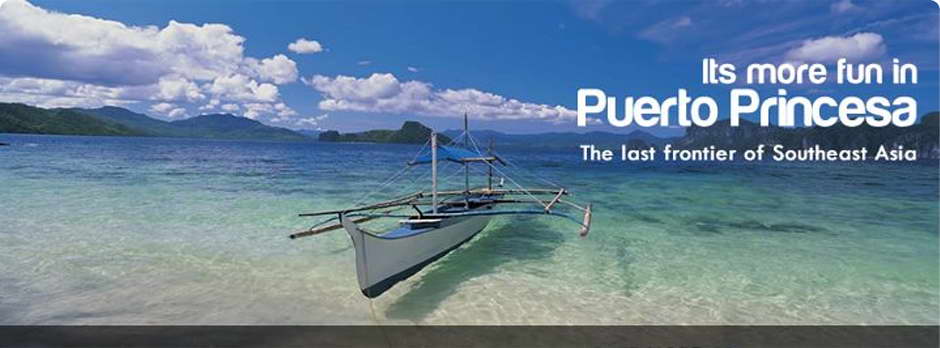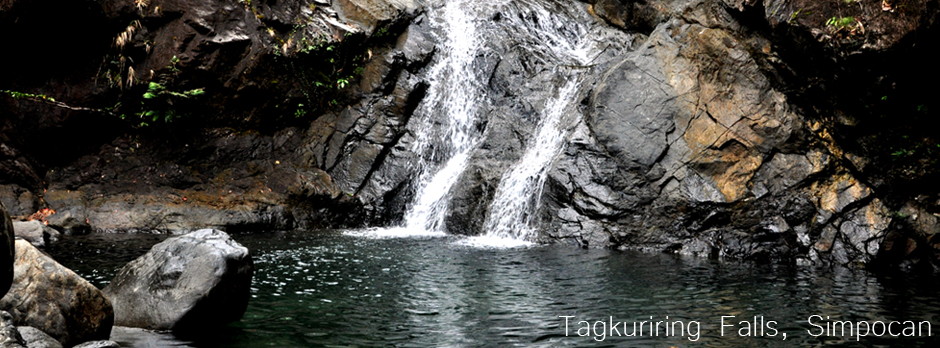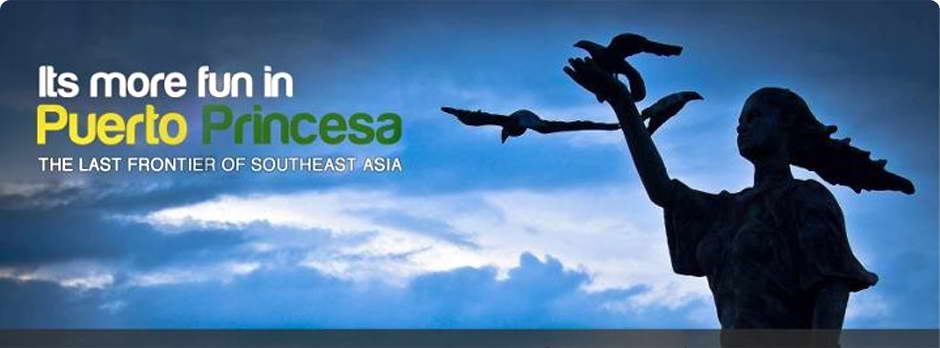CLICK HERE! For Electronic Services and Online Payment

Man and nature are twin agents of development which shapes and reshapes the face of a community and character of man’s activities. At times the struggle between the two is violent and sporadic, which invariably activate the potential energies of man and nature, molding them into a grand pattern of advance and retreat, of creativity or disastrous anatagonism, and of promise or failure. These are the realities that man has to face in the fulfillment of a vision and a mission for meaningful sustainable development.
In 1992, there were already signs of environmental stress manifested in the City of Puerto Princesa caused by rapid increase in population and denuded watershed was not able to provide the needed water during the dry months.As dynamite and cyanide fishing have destroyed coral reefs, fisherman have had to go farther out to sea to fish.
The year 1992, saw a change of administration in the City Government with Mayor-elect EDWARD SOLON HAGEDORN taking over the 27-year administration of Mayor Feliberto Rodriguez Oliveros, Jr.
 Luck must have been with him when in 1992, he was elected City Mayor. He said, “it was about time that we put a stop to all these environmental exploitation. The people of Puerto Princesa City had had enough. They wanted a leader that could put a stop to all illegal activities in the island so they urge me to run for mayor.”
Luck must have been with him when in 1992, he was elected City Mayor. He said, “it was about time that we put a stop to all these environmental exploitation. The people of Puerto Princesa City had had enough. They wanted a leader that could put a stop to all illegal activities in the island so they urge me to run for mayor.”
He declared to turn Puerto Princesa City “A Model of Sustainable Development.” To accomplish the vision, he firmed his mission to protect and rehabilitate whatever is left of the existing natural rsources; institute an intelligent, well-planned and sustainable development master plan in the utilization of its natural rsources in order to strengthen its potential of increased financial capability.
These were premised on the reality that Puerto Princesa City is endowed with untapped and underdeveloped natural resources and an estimated large population of 125,573, in 1994 spread, though in some places thinly scattered in a vast land area and necessary manpower to undertake the requirements of sustainable development. In 1990, Puerto Princesa has a labor force of 59, 899, about 31.91 percent of the employed were engaged in agriculture and fishing.
Population concentration is noticeable within the eastern side of the peninsula in the 11 rural barangays of Bancao-Bancao, San Miguel, San Pedro, Tiniguiban, San Jose, San Manuel, Sta. Monica, Sicsican, Irawan, Tagburos and Sta. Lourdes which are relatively close to ech other. The rest of the barangays are scattered over the leangth of the eastern coastline of undeveloped large tract of land. There are five barangays located in the west coast, which is almost blocked off by rugged mountain and thin forest. There are two barangays which are still to be linked with the City’s road network system.
The City has a rich fishing ground. Aside from fish, shrimps, prawns, lobsters, crabs and other marine resources can be had in commercial quantities. The City has also about 1,633 hectares suitable for inland fishing.
More fascinating is that Puerto Princesa is endowed with beautiful natural spots, beautiful unspoiled islands, white sand beaches and rare species of flora and fauna and cultural tribes which could boost tourism.
However, the new City administration was faced with myriad of issues and problems. Outstanding were: deteriorating peace and order and economic slump; uncooperative if not indifferent populace; lack or absence of a Master Plan of Development; there were 9,500 homeless families; inadequate banking facilities; inadequate sea and air transport; modern means of communication; dwindling tourist arrivals; lack or absence of medical services especially in far distant rural barangays; and on top of all these, the negative image of Puerto Princesa as home of prisoners, specifically the presence of Iwahig Prison and Penal Farm and the prevalence of the much dreaded water-borne malaria.
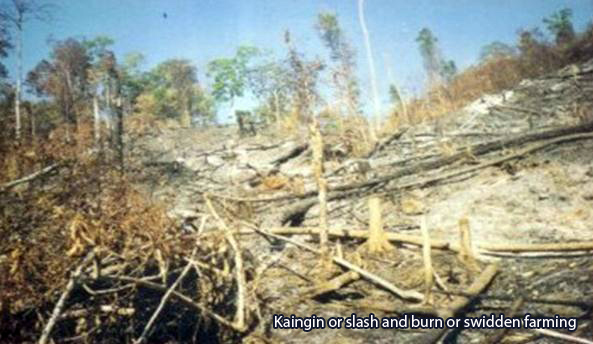 Kaingin or slash and burn or swidden farming
Kaingin or slash and burn or swidden farming
Studies unmistakably show that the immediate causes of this gloomy atmosphere were: piles of uncollected garbage and dirty streets; slash and burn farming or kaingin (Swiden farming); and the most destructive illegal logging while the depletion of marine rsources was accelerated by use of toxic substances and such fishing methods, as the muro-ami.
Edward Solon Hagedorn officially started his administration as City Mayor of Puerto Princesa, on June 30, 1992, when practically all the monies of government had already been budgeted and spent. There was 3.1Million net cash overdraft which by August, he managed to wipe out and made available another 3.1Million for his administration’s programs.
Since the turn-over happened in the middle of the year, a re-planning was done although most of the previously planned projects were vigorously pursued. Working with little funds then still available such as savings from completed projects, realignment of unspent balances of projects that were perceived to be poorly managed plus a little amount left unappropriated, the new administration resolved to demonstrate success in his development concerns.
Guiding Principles: Upon assumption of Office as City Mayor, Edward was guided by four basic principles: Positive Mind Power, Political Will, People Participation and Prayer. He attributed to these principles for success of his three-pronged program: Kalinisan, Katahimikan at Kaunlaran (Cleanliness, Peace and Order, and Development), in these words: “When Puerto Princesa clamored for change, I happened to be there. I was then made to carry the torch of new light and it was there that I realized the flames had to be continuously lit up with the Four Ps that was soon gifted us. Guided by these gifts, we were able to transcend barriers that allowed our community to rise up and shine as an example of how people can live, work and grow together harmoniously taking cognizance of the very important role our environment play in our lives.”
Positive Mind Power. Indeed, it must be Edward S. Hagedorn’s religious upbringing, in discernment internalized, the Instructions of Saint Paul to the Philippians 4:5, “Show a gentle attitude toward everyone.” And “Don’t worry about anything” (6) and “In conclusion, my brothers, fill your minds with those things that are good and that deserve praise; things that are true, nonle, right, pure, lovely and honorable” (8).
Political Will. It is the exercise of political prerogatives in making reasoned choice or decision or controlling one’s own action. Simply stated, it is the oft repeated saying “where there is a will there’s a way.”
In other words it is spontaneous action, similar to serving God, where one must be prepared to meet trials and adversities, when done with sincerity, steadfastness, and fidelity. Misfortune and humiliation merely purify man and prove his worth.
People Participation.The principle of Vox Populi or voice of the people cannot be taken lightly. To succeed, the people must be consulted and their wholehearted support and cooperation enjoined. This is the most positive way of getting things done. Philippine experiences have shown the world how “people power” toppled a strong president and a “popular” one.
Prayer. This is the last but not the least of the principles. Saint Theresa of Lisieux said, “For me prayer is the surge of the heart; it is a simple look turned toward heaven; it is a cry of one’s mind and heart to God or the requesting of good things from God”. Philippians 4:6 tells us, “in all your prayers ask God for what you need, always asking him with a thankful heart.”
DEVELOPMENT INTERVENTIONS
With unparalleled will-power and unprecedented firm determination to succeed, the City Mayor with the full support and enthusiastic cooperation of an experienced and competent staff, designed and launched three-pronged development programs namely: KALINISAN (CLEANLINESS) KATAHIMIKAN (PEACE AND ORDER) KAUNLARAN (DEVELOPMENT) or the three Ks to improve the quality of life of Puerto Princesans.
Foremost among these projects were: OPLAN LINIS; Environmental Protection (forest and marine resources); Provision of Basic Health Services; and Peace and Order.
When the projects were launched, the cynic spoke their language and called them as another ningas cogon scenario. However, Mayor Hagedorn’s strong resolve to produce results in these areas, complemented by the Sangguniang Panlungsod (which then virtually belonged to another political party) and the stunning degree of cooperation of the community, has carved out a new name for Puerto Princesa City as the “cleanest City in the Philippines.”
The process was not easy with limited resources and problems that stood on the way. But working as a team with a common goal and the will to make things happen, his administration was able to meet the challenges of development in the City of Puerto Princesa.
KALINISAN (CLEANLINESS)
At the start of Mayor Edward S. Hagedorn’s administration, on August 11, 1992, the OPLAN LINIS (Operation Linis) PROGRAM and CITY ORDINANCE NO. 163-91 OTHERWISE KNOWN AS THE ANTI-LITTERING CAMPAGIN was immediately implemented. In barely two months, the City of Puerto Princesa has become clean.
Puerto Princesa before the program was like other cities of the country. Its streets were dirty, the public market stunk, the solitary pier in no better condition, and its coastal lines littered with flotsam and jetsam.
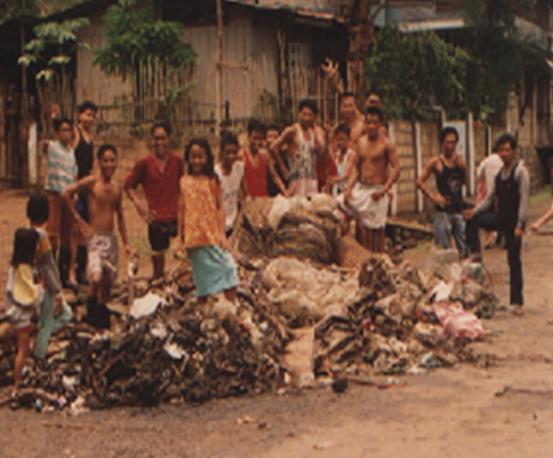 Uncollected garbage in a city's street
Uncollected garbage in a city's street
The local government seemed to have been inured by the dirt everywhere, the people resigned to the “normality” of the city’s pathetic condition. The leadership did initiate cleanliness drives, but like those of the other Local Government Units, the campaign sputtered.
City Mayor Edward S. Hagedorn in his DEDICATION written in the brochure, Oplan Linis Story, said: “A trace of our forefathers’ battle cry yet this simple line provided to be the very life that this once ignominious city held on to, to become what it is today – a Hall of Fame in the Clean and Green National Program and a multi-awarded local government unit in various fields of endeavor.”
OPLAN LINIS PROGRAM
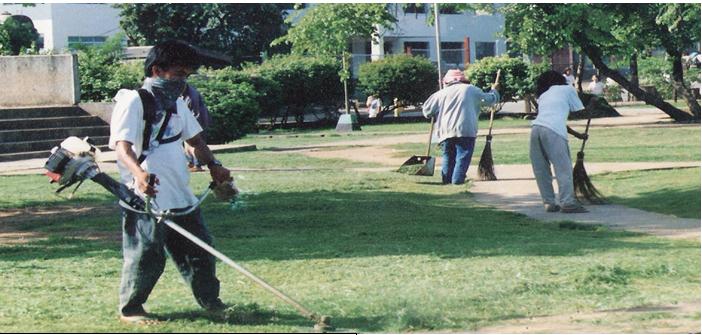 Operation Cleanliness or Oplan Linis was conceived to clean the city of tons of uncollected cigarette butts, plastics and all sorts of garbage. It was no easy task, insurmountable as it seemed, considering that the population has grown tremendously. It is his centerpiece of managing the environment.
Operation Cleanliness or Oplan Linis was conceived to clean the city of tons of uncollected cigarette butts, plastics and all sorts of garbage. It was no easy task, insurmountable as it seemed, considering that the population has grown tremendously. It is his centerpiece of managing the environment.
The Oplan Linis Program is undoubtedly the best among the few that succeeded. It had brought instant honor and prestige to Puerto Princesa City, which over the years has been known as the haven of prisoners and malaria-causing mosquitoes. Through the Program, the city’s ignominious past has been radically transformed to what is known today – the country’s Model of Cleanliness.
Oplan Linis aimed to clean up not only the body of Puerto Princesa City but also the soul as well, the latter being its people. Central to this concept is value formation through massive information and education campaigns to instill in the mind and heart of the people, especially the children the importance of a clean and green environment. By environment, it meant not only the physical but the spiritual, moral and psychological aspects as well.
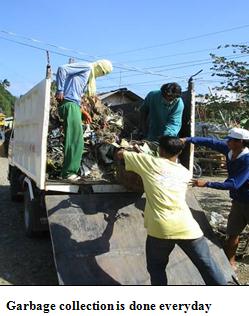 To comprehensively address the physical cleanliness of the city, Oplan Linis has six major components: Cleanliness, Beautification, Sanitation, Sagip-Dagat. Sagip-Hangin and Information Education Campaign (IEC).
To comprehensively address the physical cleanliness of the city, Oplan Linis has six major components: Cleanliness, Beautification, Sanitation, Sagip-Dagat. Sagip-Hangin and Information Education Campaign (IEC).
The Oplan Linis was designed to promote and implement in all the public places by no “fear or favor” City Ordinance No. 163-91 otherwise known as the ANTI-LITTERING ORDINANCE. Its major components are:
Cleanliness. This primarily involves proper garbage and waste disposal and the maintenance of clean surroundings by street sweeping, grass cutting and unclogging of canals.
Beautification. The program encourages the planting of ornamental plants in open spaces - along the streets, parks, airport, cemeteries, and private owners of lots and residential areas.
Sanitation. Part of the Environmental Health Service, its particular concern are examination of water facilities through the PHC Media Test, inspection of – toilets, food service, to include food handlers, drinking establishments, stores, markets, abattoir, recreational places and lodging houses.
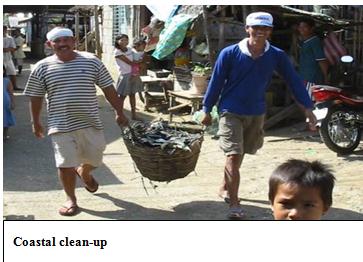 “Sagip-Dagat” Operation Basura . The program’s objective is to institute a waste management and collection of garbage in coastal areas along Puerto Princesa Bay and Sabang Bay in cooperation with other members of the Environmental and Natural Resources Sector and the coastal barangays. The Program included such activities as inspection of marine sanctuaries and fishing grounds and illegal fishing activities.
“Sagip-Dagat” Operation Basura . The program’s objective is to institute a waste management and collection of garbage in coastal areas along Puerto Princesa Bay and Sabang Bay in cooperation with other members of the Environmental and Natural Resources Sector and the coastal barangays. The Program included such activities as inspection of marine sanctuaries and fishing grounds and illegal fishing activities.
“Sagip Hagin” Operation. The avowed goal of the Sagip Hangin Operation is to continuously provide the people of Puerto Princesa a clean air and healthy environment. Executive Order No. 017, Amending Executive Order No. 07, re-activated the Task Force “Sagip Hangin” to effectively implement the Clean Air Act of 1999, issued on January 18, 2003 provided that it shall be composed of the City Environment and Natural Resources Office (ENRO) as the lead implementing agency with the cooperation and assistance of the Land Transportation Office (LTO), The City Information Office (CIO), the City’s Traffic Management Office (CTMO), the Local Philippine National Police (PNP), the Hig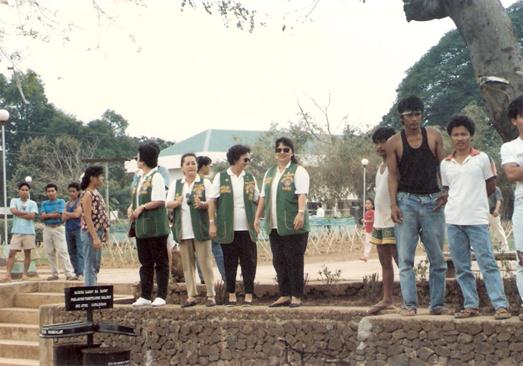 hway Patrol Group (HPG), and the Department of Environment and Natural Resources (DENR) thru the CENRO and PENRO devices of his/her own choice which meet the specification set forth by the City ENRO and/or DENR and DOTC, as provided for in RA No. 8749.
hway Patrol Group (HPG), and the Department of Environment and Natural Resources (DENR) thru the CENRO and PENRO devices of his/her own choice which meet the specification set forth by the City ENRO and/or DENR and DOTC, as provided for in RA No. 8749.
Information and Education.. These are done through lectures, talks, posters, radio broadcast, television programs, newspapers, interviews and testimony.
The Birth Pains of OPLAN LINIS. Inspired by a six-year old girl, who Ellen with her mother Aliva Clark Marcelo and sister Teresita Marcelo Maslog watched while sitting in one of the benches in Rizal Boulevard, Dumaguete City, as to what would she do with an empy corn-cob, when she had finished eating her corn–on-the-cob. They made guesses: that the little girl would threw it out in the sea or better still threw it on the street but to their amazement the little girl walked a short distance toward the trash bin and threw the empty corn cob into the bin. Ellen thought that if this can be done in Dumaguete City, then, why not in Puerto Princesa City.
Silently, Ma. Elena Marcelo Hagedorn, her sisters Teresita and Editha with a team of equally motivated ladies, launched the Oplan Linis Program without fanfare. At first they tried with a group of adults with the mindset to undertake the ground work. She later found out that the adults were busy with other things for a living. So the group focused to train the youngsters. They invaded the classrooms in the elementary and high schools, with permission from the school authorities. To their satisfaction, the program was well-received. Talks on cleanliness preceded sumptuous merienda or snacks. By force of habit, a number of pupils and students aimlessly threw the food wrappers away. Others looked for the waste bin in the room. To further observe the pupils/students, the group would return to the same school going through the same process until such time the pupils and students learned and developed a mindset of cleanliness and threw the wrappers in the waste bin provided for the purpose.
Through this painstaking process of educational campaign, Oplan Linis, became a way of life as more and more young people enlisted to be members of the Oplan Linis Family. As such they become the promoters and enforcers of cleanliness in their community – their homes, in public places, including public utility vehicles plying the Puerto Princesa City and far flung areas in the Province of Palawan.
Enforcement. The enforcement of the Anti-Littering Ordinance was effected and after a few apprehensions, readily accepted by the community. Its strict enforcement proceeded without let-up and applied to all regardless of social standing, even high officials of government are not spared the payment of fines for violations.
The Mayor Fined For Littering. Ellen related an incident where husband Mayor himself was a violator of sorts. She recalled with a grin how they were able to impose a fine on the Mayor. Accordingly, on the year Oplan Linis was launched, Mayor Hagedorn called for a meeting. A habitual smoker, nonchalantly threw his cigarette butt in theyard.
The City Chief of Police reported to Mrs. Hagedorn: “Ma’am si sir o nagtapon ng upos” (Ma’am, look, sir threw his cigarette butt in the yard). She told the Chief of Police “Multahan mo siya. Kung hindi mo siya multahan, ikaw ang multahan ko” (“Fine him, if you don’t fine him, I’ll fine you.”). Mayor Hagedorn overhearing her directive asked “Pati ba ako sama diyan?”(“Am I also included in the paying of fine?”). “Aba natural” (Of course), she answered. The Chief Executive paid the fine of Php 200.00. Broadcast media had Mayor Hagedorn on radio and television for sometime. The local newspapers also reported that the Mayor was caught throwing his cigarette butt in the yard and paid the fine for violating the Anti -Littering Ordinance.
Visitors who come to Puerto Princesa City are continually cautioned by air and sea transport authorities to observe the City’s Anti-Littering Ordinance or be fined for y violation.
Eleazar M. Famoran, (Health & Home, November- December 2000: 27-29) wrote that what she found out about the residents of Puerto Princesa was that they mind getting their pockets punctured less than they mind getting their pride pricked. Pride is a clean community. Pride as a people who take cleanliness seriously, who make cleanliness a way of life.
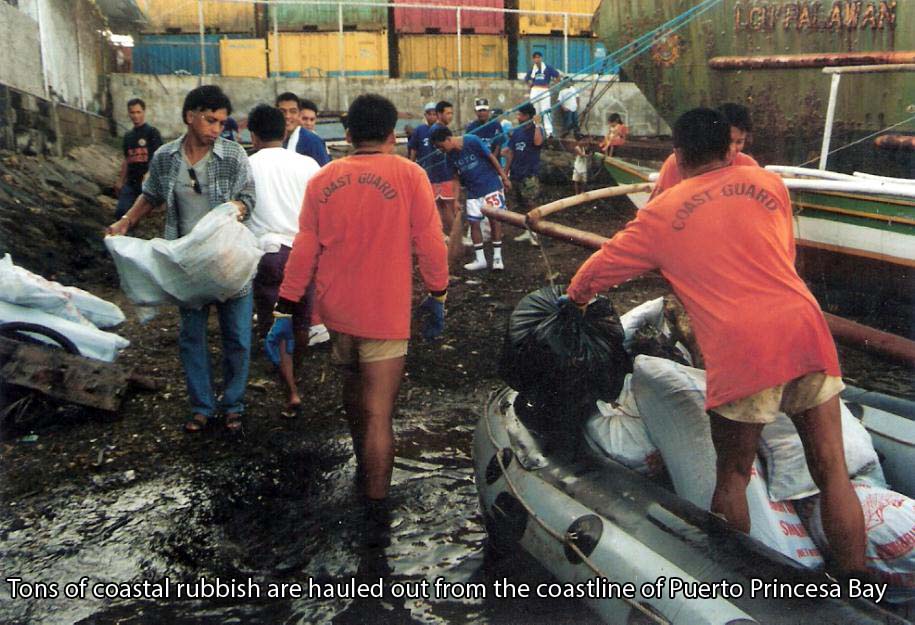 The Oplan Linis workforce of about 70 employees, sweep the streets, landscape and clean public places, parks, public restrooms, hauled 30 tons of rubbish per month from the coastline of Puerto Princesa Bay, impounded stray dogs found in the city’s main thoroughfares and side streets, oriented all elementary school pupils in the urban barangays on the program and enlisted them to become members of the OPLAN LINIS FAMILY.
The Oplan Linis workforce of about 70 employees, sweep the streets, landscape and clean public places, parks, public restrooms, hauled 30 tons of rubbish per month from the coastline of Puerto Princesa Bay, impounded stray dogs found in the city’s main thoroughfares and side streets, oriented all elementary school pupils in the urban barangays on the program and enlisted them to become members of the OPLAN LINIS FAMILY.
It was estimated that more or less 8.5 tons of garbage per day or an estimated 30,600 tons during the year in 15 barangays were hauled daily in 2003. The dumpsite is sprayed with micro-aid activator to mitigate odor and get rid of flies to ensure that the health of the people living in the vicinity of the dumping areas are not affected. The sanitary and healthful environment has co nsiderably lessened the incidence of an epidemic as compared to previous years whereby at least 100 families were infected by contagious diseases and viral infections due to its unsanitary  surroundingsThe strict enforcement of the Anti-Littering Ordinance dramatically changed the negative attitude to more positive ways, such that, the public carriers had devised a system where garbage receptacles are strategically installed inside the vehicle. Even the balot and other ambulant vendors carried with them receptacles for clients to put food refuse and the like.
surroundingsThe strict enforcement of the Anti-Littering Ordinance dramatically changed the negative attitude to more positive ways, such that, the public carriers had devised a system where garbage receptacles are strategically installed inside the vehicle. Even the balot and other ambulant vendors carried with them receptacles for clients to put food refuse and the like.
The Oplan Linis Program gained perceptible acceptance with increase in the number of Oplan Linis Families, an organization composed mostly of elementary school pupils and high school students, who have been truly motivated to make cleanliness and sanitation a way of life. Only one family is organized in every school with not more than 50 members.
Succinctly, the impact of Oplan Linis Program’s non-quantifiable indicators is expressed in the brochure as:
We really cannot place a tag for the acquired self-esteem, encouraged by the success of the program, the individuals who once were skeptical to overnment nitiated activities are now properly motivated with the right attitude and proper values.Disciplined as they are now, the people continuously play a major role to support the gains acquired thru the programs. We can only listen to their anecdotes of things they have done here and wherever they maybe that they are Puerto Princesans – proud of having imbibed the virtue of cleanliness.
The Oplan Linis Project Manager, City First Lady Ma. Elena Marcelo Hagedorn says of the future of the program:
High expectations based on the program’s success are not remote. At our end we want the program to be sustainable, to go beyond the term of the present Administration. We will be proud to see the same things happening in most parts of the country as well.
Basically, the program envisions a zero waste community. Garbage receptacles will no longer be installed in major thoroughfares. Trash coming from the households must be properly disposed based on its classification as to wet which is mostly biodegradable, non-biodegradable and a separate container for the bottles. This in effect, will minimize those that need to be collected and dumped at the site. The present rate of garbage disposed of have been reduced from an average of 8,5 tons per day two years ago to the present average of three tons per day. The bulk of the garbage comes from the marketplace. Except in this area, we are targeting once a week garbage collection in Puerto Princesa’s households.
Technology transfer in recycling will also be conducted as an alternative livelihood activity. Garbage classified to be of value will be utilized for this purpose. The program is now improving on the quality of organic fertilizers produced. Once developed, it will answer the fertilizer requirement of the City Government’s agricultural program. As future production warrants the same will be made available to the private sector.
We aspire for a higher degree of discipline, based on the people’s developed sense of pride and commitment. Only through this, can we really look back and say “we made a significant mark in the establishment of a model community. (Brochure: Oplan Linis Story. The Puerto Princesa Experience.)
CLEANEST AND GREENEST HALL OF FAME AWARD
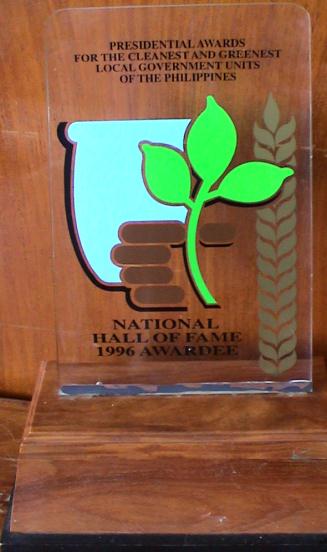 In 1894, Puerto Princesa said to be the smallest among the Hispanic settlements in the island of Paragua, became known as “Unos de los mas bellas,” an award of recognition as one of the most beautiful towns in the Philippines for its orderly distribution of streets and houses and its cleanliness. A century later, regained its title, when in a joint search launched through the Department of Interior and Local Government (DILG); Department of Environment and Natural Resources (DENR); Department of Tourism (DOT) and Civic Groups by First Lady Amelita Ramos, has chosen Puerto Princesa City as the “CLEANEST AND GREENEST COMPONENT CITY IN 1994.”
In 1894, Puerto Princesa said to be the smallest among the Hispanic settlements in the island of Paragua, became known as “Unos de los mas bellas,” an award of recognition as one of the most beautiful towns in the Philippines for its orderly distribution of streets and houses and its cleanliness. A century later, regained its title, when in a joint search launched through the Department of Interior and Local Government (DILG); Department of Environment and Natural Resources (DENR); Department of Tourism (DOT) and Civic Groups by First Lady Amelita Ramos, has chosen Puerto Princesa City as the “CLEANEST AND GREENEST COMPONENT CITY IN 1994.”
Then in 1995 it continued to hold the distinction as the Cleanest and Greenest City in the Country when it won the AWARD OF EXCELLENCE given by His Excellency President Fidel V. Ramos at Rizal Park, Manila on December 19, 1995. Likewise, theCity was adjudged as the Cleanest and Greenest in Region IV and CLEANEST INLAND BODY OF WATER.
The City’s sustained drive to maintain cleanliness, beautification and environmental sanitation thru its OPLAN LINIS Program, has for three consecutive years held the distinction as the CLEANEST AND GREENEST CITY in the Country, earned the 1996 HALL OF FAME AWARD.
ROLE OF WOMEN
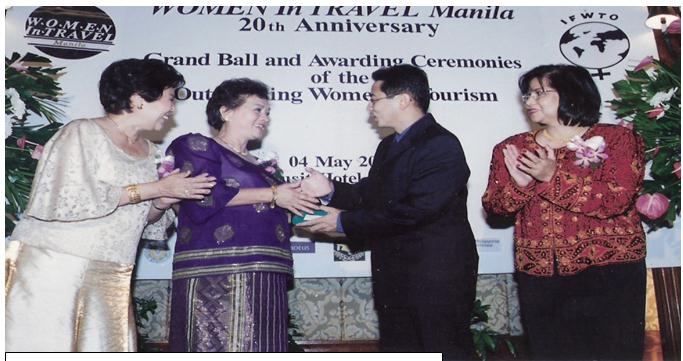 The role of women in the development of Puerto Princesa City is best attested by the awards given particularly to Mrs. Ma. Elena Marcelo Hagedorn, one is for Oustanding Woman in Tourism in 2000 by the organization of Women in Travel (WIT), Manila. The award was given in recognition of the “achievements of prominent women in government who have dedicated themselves to the growth of tourism in their own areas”, making their respective cities well known the world over.
The role of women in the development of Puerto Princesa City is best attested by the awards given particularly to Mrs. Ma. Elena Marcelo Hagedorn, one is for Oustanding Woman in Tourism in 2000 by the organization of Women in Travel (WIT), Manila. The award was given in recognition of the “achievements of prominent women in government who have dedicated themselves to the growth of tourism in their own areas”, making their respective cities well known the world over.
Mrs. Hagedorn was awarded Outstanding Woman in Tourism for her contributions as key partner in the several eco-tourism awards such as the Philippine Earth Award for Wildlife Protected Area Management; the Grand Award in the First Macli-ing Dulag Environmental Achievement Award, and other clean and green awards for the City and in the re gioHer other achievements in the promotion of tourism are: the Palawan visitors exhibit of local tourist attractions was chosen for five consecutive years the Travel Mart’s Best Tourism Destination Booth; in 1994 Travel Mart chose Puerto Princesa –Palawan as the country’s best tourism destination and received a citation from SKAL for espousing cleanliness, peace and order, and economic progress which continued to attract foreign and local visitors. Moreover, the visitors enjoyed such eco-tourism activities as caving, scuba diving, jungle trekking and the like.
The National Council of Women of the Philippines, has chosen Mrs. Ma. Elena Marcelo Hagedorn as the Ten Outstanding Women of the Philippines on April 3, 2003 for her outstanding performance as Oplan Linis Program Manager of the City of Puerto Princesa.
 Aside from the aforementioned awards, Ellen, as friends fondly call her, Mrs. Hagedorn is known for her big heart to help the underprivileged women particularly in the coastal communities in the City of Puerto Princesa improve their financial status in life.
Aside from the aforementioned awards, Ellen, as friends fondly call her, Mrs. Hagedorn is known for her big heart to help the underprivileged women particularly in the coastal communities in the City of Puerto Princesa improve their financial status in life.
She founded in August 1988 the Charity Women’s Association (CWA). Its mission is to provide opportunities and assistance and inculcate the virtues of cooperativism and hard work towards the upliftment of the standard of living of the poor and needy.
The association which started in nine (9) coastal barangays in the City proper with a membership of 180 women in 1988, had grown to over 194 chapters with a total membership of 18,000 women, composed of retirees, professionals and those who are gainfully employed – resulting from the continuous skills-trainings for women in dressmaking, stuff toy making, hair science, bag making, sandal/slipper making, Christmas décor making, food processing and other forms of livelihood programs. She saw to it that these skills did not only end up in the training room. She saw to it that the women applied what they learned and passed it on to the other members of the family, thus making it a profitable venture for family business and their peers. In other areas, the participants organized themselves into a cooperative and established their own dress or tailoring shops.
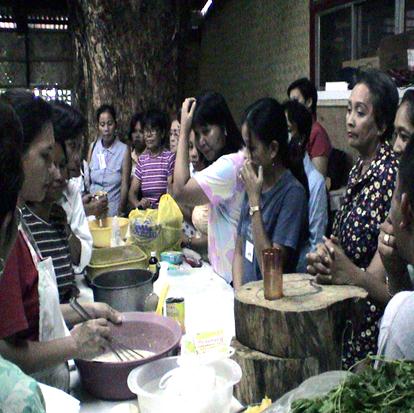 On September 15, 2000 the association’s status was converted to a Foundation, thus named Charity Women’s Foundation, attributed to its increasing number in membership.
On September 15, 2000 the association’s status was converted to a Foundation, thus named Charity Women’s Foundation, attributed to its increasing number in membership.
The major role played by Mrs. Hagedorn is best shown in the Oplan Linis Program of which she is the Project Director. Eleazar M. Famorcan, writing about “Puerto Princesa City: Where Cleanliness Is a Way of Life,” said of Ellen Hagedorn: “Two days after we arrived in the city, I met the vivacious lady in a quiet, unassuming room where she does much of the planning and paperwork for her myriad civic activities.”
It is worth repeating what has been said earlier, how Oplan Linis was launched. “We started with the adults,” Ellen Hagedorn says, “But they were usually busy with other things. So we changed strategies.”
The fallback plan was to educate the young – especially elementary and high school students. “We’d go to schools and talk about cleanliness,” Ellen remembers. “Afterwards, we’d serve snacks for a purpose.” The idea was to see whether after eating, the children would properly dispose their food wrappers in a trash can. “May bantay kami. Pag nakita nilang may isang hindi itinatop sa basurahan ang kalat nila, kahit isa lang, babalikan naming ang school.” (Someone keeps watch over the children, if they throw their food wrappers properly in the trash can. If they failed even just a piece of wrapper is not properly disposed of, then we go back to the school until they do things properly.
In time, more and more young people would enlist in Oplan Linis, serving as promoters and enforcers of cleanliness in homes, schools – even far flung areas where the program is hard to implement.
The awards received by Mrs. Ma. Elena Marcelo Hagedorn symbolized the role of women in public affairs. It can be said without reservation, that society must now recognize the important and significant role of women in government as well as in the community. It can also be said without gainsaying the fact that the stability of society can be attributed to the great strength of women, particularly in the moral aspects.
FAMILY PROFILE

Ma.Elena Clark Marcelo Hagedorn comes from a prominent clan in the City of Puerto Princesa. She is the eldest of the nine children of Aliva Palanca Clark and Benito Jason Marcelo Jr. Ellen was born on December 31, 1941; Benito III, April 28, 1944; Anita, August 9, 1945; Benjamin, October 12, 1947; Ma. Teresita, March 24, 1950; Ma.Editha, April 14, 1953; Ma.Antonietta, August 8, 1956; Benigno Alberto, July 11, 1958; and Bernanrdo, August 2, 1959. All the children were born in Puerto Princesa City.
Ellen is married to Edward Solon Hagedorn. The couple has two children: Eva Christie Fatima is married to Gregorio L. Villegas with three children: Vaughn Edward, Val Edric and Vince Alphonse;
and Elroy John, married to Marijo Arboleda Villena with three children: Emmanuel Christopher, Englebert Christian and Elijah Cayle.
She finished her intermediate and secondary education at the Holy Trinity College, a Catholic institution of learning under the Dominican Sisters of Sienna. She graduated from the Philippine Women’s University, Manila,  with a degree of Bachelor of Science in Home Economics.
with a degree of Bachelor of Science in Home Economics.
The comely mestiza started her career as a classroom teacher at the Palawan National High School in Puerto Princesa. She stayed only for one school year, 1964-1965. In 1967, she was appointed Administrator of the Philippine National Red Cross.
Then in 1973, she served as researcher at the Provincial Development Staff in the Office of the Governor of Palawan and the succeeding years held the positions of: Tourism Researcher and Tourism Coordinator (1974-1976); Tourism Officer (1976-1979); Tourism Promotions Officer (1979-1986); Tourism Officer II (1987-1993); and Supervising Tourism Operations Officer (1994).
Mrs. Ellen Hagedorn was elected in 1990 as the first lady President of all Women Lion’s Club in Puerto Princesa City; elected Zone Chairman in 1991 and the first lady Regional Chairman in Asia that time of the Lion’s Club International in 1992. She received various prestigious local and national awards.
KATAHIMIKAN (PEACE AND ORDER)
The main objective of Katahimikan or Peace and Order and Justice is to restore once and for all the trust and confidence of the people on the City Government on matters that affect their safety, the maintenance of peace and order and the delivery of barangay justice.
The City Mayor is clothed with substantial powers under Section 51 par (b) of Republic Act No. 6975 to impose discipline and initiate measures to enhance its capability and effectiveness. The provision reads: “The City and Municipal Mayors shall exercise operational supervision and control over PNP units in their respective jurisdiction except during the thirty days period immediately preceeding and thirty days following any national, local or barangay elections. During the said period, the local police forces ahall be under the supervision and control of the Commission on Elections”, The term “operational supervision and control” shall mean the power to direct, supervise, oversee and inspect the police unit or forces”. (Rules and Regulations Implementing the Local Government Code of 1991).
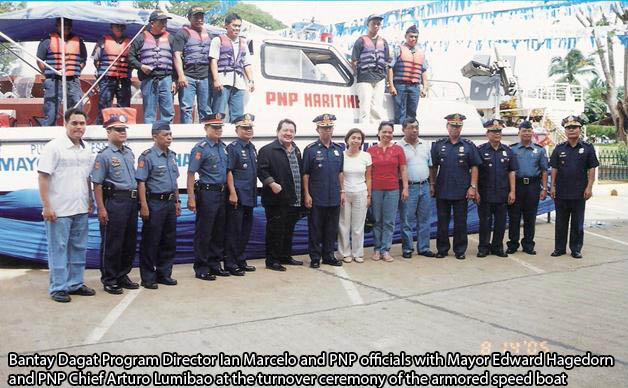 In pursuant to the said mandate, the City of Puerto Princesa implemented the following measures:
In pursuant to the said mandate, the City of Puerto Princesa implemented the following measures:
Traffic Improvement Management. A re-orientation program has been designed to enhance the proficiency and effectiveness of the 42-man Traffic Task Force on traffic enforcement rules and regulations. Self-discipline was emphasized, individually and collectively, including drivers and associations with meaningful results. They are deployed in strategic streets and different schools. To complement the Traffic Task Force, the Task Force Colorum was organized jointly with the PNP, LTO and Traffic Enforcers in the implementation of the Zoning Order 103-98. School children were also trained in traffic disposition and controlThe Traffic Task Force also participated in the implementation of the Sagip Hangin Operations.
Katarungang Pambarangay. The program was envisioned to preserve the time honored tradition of amicably settling of disputes among family and community members. This involved monitoring and evaluation of the administration of barangay justice in the City.
Article 196 of the Rules and Regulations implementing the Local Government Code of 1991, provides, “There shall be created to each barangay a Lupon Tagapamayapa composed of the Punong Barangay as Chairman and ten to twenty members”. The Lupon shall be constituted every three years.
The main function of the Lupon is to settle domestic and community disputes through amicable means. In fact no dispute shall be considered by higher authority unless the same been acted upon by the barangay concerned. Mediation is first conducted by the Punong Barangay as Chairman. Upon agreement of both parties in the controversy, the case may be elevated to the Pangkat Tagapagkasundo for conciliation.
Special Monitoring Unit Project. The unit is tasked to monitor the crime situation and other related activities in the City. The intensive efforts made to control drug abuse and all forms of lawlessness and disorder in the City. A very good peace and order situation in the City has been sustained.
Police forces and intelligence work were strengthened and improved by acquisition of more firearms and handheld radios. Prompt response to calls and greater police visibility further reduced incidence of crime.
To complement the Police forces, the City employed Traffic Enforcers deployed in busy streets to direct the traffic. While the Bantay Puerto Special Monitoring Task Force and Night Patrol have also given their share in making the City perhaps the most peaceful in the country.
As a result of these concerted effort in maintaining peace and order in the City, a prestigious PEACE AWARD was received by the City Police Department given by President Fidel V. Ramos for being the most peaceful City with the lowest crime rate and highest crime solution efficiency rate. During this same year, 1995, it was also the recipient of the Awards for the “BEST POLICE STATION OF THE YEAR” and the “BEST GOVERNED LOCAL GOVERNMENT. “
KAUNLARAN (DEVELOPMENT)
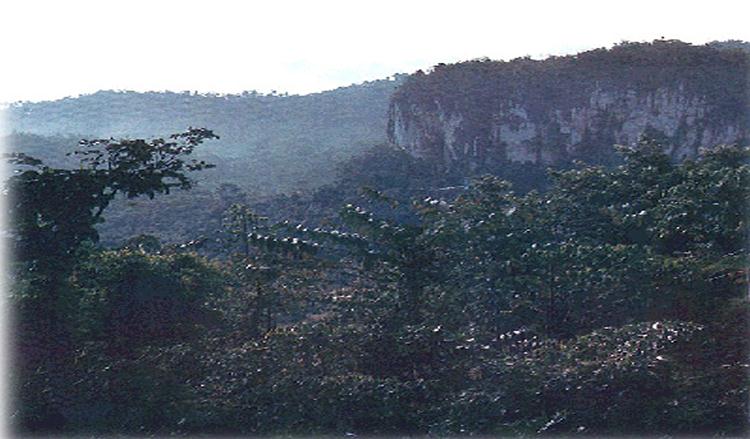 FOREST RESOURCES
FOREST RESOURCES
The major forest product is timber. The principal timbers are: apitong, ipil, narra. In the earlier years, its use was limited for the construction of buildings, houses and other needs by the natives and settlers until logging companies were granted concessions to exploit these resources.
The denudation of the forests have been attributed to loggrs and the kaingineros, a practice principally by the natives in cutting and burning the trees for planting upland rice and root crops for subsistence.
MINOR FOREST PRODUCTS
Among the minor forest products are: almaciga, honey, ferns and orchids, beeswax, rattan or sika and cotton tree (kapok) has high economic value. Kapok is domesticated in some places.
Popular exports at the time were forest products, such as timber, rattan, tanbark, almaciga, nigue and beeswax which were sent to Manila, North Borneo and Singapore.
Almaciga. It belongs to the pine tree family and grows 50 to 60 meters high and its trunk two meters in diameter. Almaciga is resin extracted from trees of the Agathis alba and Fragrosa perigrina types. The bark which is ten to 15 millimeters thick, brittle with a light greenish to brownish gray color, produces the resin. The tree is scroll-shaped. It grows best in well-drained slope of 600 to 1,500 meters elevation and 200 to 2,000 meters altitude. Its chief value is the resin it produces. The resin is used chiefly in the manufacture of high grade varnish and in other processes such as the production of latent leather and sealing wax. Locally, it is used as incense in religious ceremonies, torches, starting fire and caulking boats. The cutting of almaciga trees is strictly prohibited and the gathering of its resin regulated. Large tracts of forest lands where almaciga grow are parceled out in concessions. This is one of the major exports of Puerto Princes a.
Almaciga resin, locally known as bagtik is sticky liquid organic substance which usually haredn when exposed to air, into brittle, amorphous, solid substance.
Cotton Tree. Cotton tree is locally known as kapok or doldol. The tree is slender and grows as tall as fifteen meters high. The seeds produce oil, greenish-yellow in color it has a pleasant taste and odor. The oil extracted from the seeds is used for the manufacture of soap. The commercial value of cotton fiber is, it is used for filling bed and pillow materials such mattresses. In some places this treeis grown for commercial purposes.
Kawayan. Bamboo or commonly called kawayan is principally used for construction of houses, fences, etc. The Filipinos may not live without the bamboo. It is prized for its usefulness due to its strength and durability which have been tested to compare favorably with steel. The green stem is used in the manufacture of baskets, hats, furniture while its shoots for food, usually cooked with coconut milk.
Rattan Palm. Rattan palm locally known as sika, is one of the major exports of Puerto Princesa. It is particularly prized for its beauty when manufactured into furniture, chairs, baskets and the like. The locals use it for bundling or tying.
Honey. It is one of the forest products from Palawan that is discriminately favored. Since time in memorial, honey has been the major source of carbohydrates in the diet of the Bataks. Today, it has become their major source of income. The gathering of large quantities of honey in Puerto Princesa as well as its transport to other places outside the City requires a permit. The gathering of honey has been allocated to concessionaires.
Fermented honey is used to make honey wine or mead. It ferments readily at 16 degrees centigrade (about 60 degrees farenheit).
PUERTO WATCH
The Program initiated as Bantay Puerto’s Coordinator Program, was the first program launched by Mayor Edward S. Hagedorn when he assumed office as City Mayor. It was an intensified campaign against environmental degradation.
The center of activities was the protection and conservation of the remaining natural resources for sustainable development. Had this government been not vigilant enough, the forest cover of Palawan including Puerto Princesa City could had been totally destroyed at the rate the verdant lands had been systematically denuded, averaging about 3,968.4 hectares per year or 10.87 hectares per day.
His enthusiasm elicited the undivided support and cooperation of the Sangguniang Panlungsod and active participation of the residents in the affected areas, in particular and the whole population.
Bantay Puerto Program (Puerto Watch). In July 1992 under the new leadership of Puerto Princesa City Mayor Edward S. Hagedorn, countermeasures were immediately instituted to abate the widespread environmental degradation. Central to this is the Bantay Puerto Program or Puerto Watch. Its key management concept: Protect, Rehabilitate, Plan. To protect what is there, rehabilitate what has been destroyed and plan for the intelligent utilization of the City’s terrestrial and marine resources. This is the life cycle that the program envisions to achieve sustainable development.
One of the major components of Puerto Watch is Bantay Gubat or Forest Watch which is tasked with the protection, conservation and rehabilitation of the City’s forest areas. It has continued to confiscate illegally cut prime lumber, endangered species of flora and fauna and apprehended violators of forest ordinances and filed cases against them of which a number has been convicted.
To rehabilitate the denuded areas of the City’s forest lands, the program embarked on a massive reforestation scheme dubbed “Pista Y Ang Cagueban” where thousands of people from all walks of life were mobilized to plant trees in the watershed area in Irawan and Magarawak. The program has succeeded in planting 1.2 million of different species of trees with an 80 percent survival rate. Further, in inculcating the proper attitude among Puerto Princesans towards tree planting and conservation. The Pista is celebrated every last Saturday in June.
Inspired by the City Leadership’s strong determination to preserve and conserve its forest resources, the Department of Environment and Natural Resources (DENR) turned over to the City Government the management and control of the world-renowned 5,753-hectare St. Paul’s Subterranean River National Park (SPSRNP), today known as Puerto Princesa Subterranean River National Park (PPSRNP). The devolution of management from the national to the local government unit is the first in the history of the country. The Park, included in the UNESCO World Heritage List is the City’s foremost tourist destination.
When Mayor Hagedorn opted for sustainable as opposed to extractive development and implemented nature conservation measures, his sole interest is to preserve nature for the next generations. Thus, Puerto Princesa City became the center of national and international attention because of his administration’s astounding success in ecological conservation.
Environmental protection was not limited to apprehension of illegal loggers, slash and burn farmers or kaingineros, and illegal fishing, focus was directed at the prevention and regeneration of the environment. The program substantially reduced illegal logging and fishing in the City.
In recognition of the Bantay Puerto Program, in 1993 the City’s first Galing Pook Award was given by the Asian Institute of Management and a Macli-ing Dulag Award for Environmental Leadership.
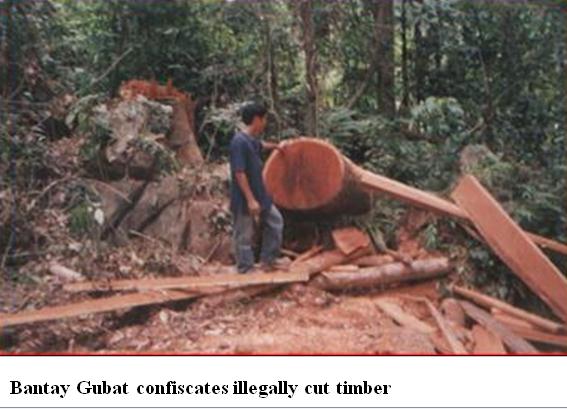 Bantay Gubat (Forest Protectiom). The main function of the program is to protect and conserve the remaining forest cover and mangrove areas of the City against illegal activities and the rehabilitation of denuded forest in an environmentally sustainable, socially equitable and economically practicable ways. This is done through daily foot patrol in the 151,405 hectares of forest cover in coordination with other agencies concerned (DENR, PCSDS, Barangay Council, Tribal Council, NGOs); apprehension of suspected violators and file cases in court; foot patrol on the 1,344 hectares mangrove areas; and a 24-hour daily manning on three Monitoring Stations.
Bantay Gubat (Forest Protectiom). The main function of the program is to protect and conserve the remaining forest cover and mangrove areas of the City against illegal activities and the rehabilitation of denuded forest in an environmentally sustainable, socially equitable and economically practicable ways. This is done through daily foot patrol in the 151,405 hectares of forest cover in coordination with other agencies concerned (DENR, PCSDS, Barangay Council, Tribal Council, NGOs); apprehension of suspected violators and file cases in court; foot patrol on the 1,344 hectares mangrove areas; and a 24-hour daily manning on three Monitoring Stations.
Some 74,363 forest and fruit tree seedlings and mangrove plants and propagules were distributed to the different beneficiaries from the different barangays. In support of this program, six nurseries in Magarawak, Irawan, Napsan, Manalo, Olangoan Waterfalls, Barangay Binduyan and Elsa Park in Barangay Sta. Cruz produced more than 150,000 seedlings. Mini-nurseries were established in Tagburos, Sicsican, and sitio Sabang, Barangay Cabayugan to support the increasing demands for seedlings and planting materials.
MINERAL RESOURCES
The minerals found in Puerto Princesa are mercury, chromite, silica, marble and quarts. Of these, quicksilver or mercury was mot productive until is phased out.
Of the several mining companies engaged in exploratory ventures, the Palawan Quicksilver Mines, Inc. owned and managed by Marsman and Company was allowed to operate the only known deposit of mercury in the Philippines in Puerto Princesa. It started operation in 1955 producing “pure mercury”. Its monthly production was about 23,000 lbs. The mining operations had contributed much to enhance the economy of Puerto Princesa.
Also located in Puerto Princesa is a geological reserve of 245,000,000 metric tons of limestone and recoverable limestone block for marble of 31,000,000 metric tons. Samples taken at random by the Aguinaldo Development Corporation indicated excellent polishing qualities.
Despite the huge mineral deposits, primarily limestone, the City Government has issued an indefinite moratorium on mining projects in Puerto Princesa City
MARINE RESOURCES PROTECTION
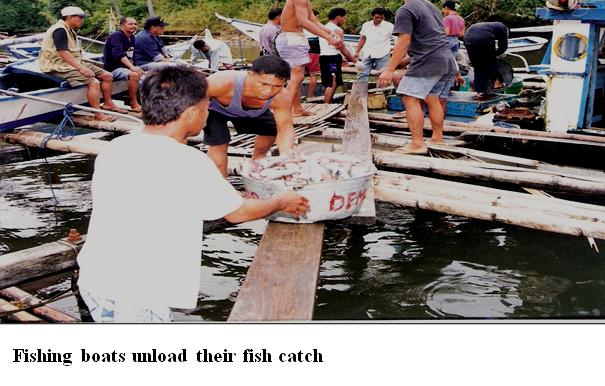 Fishing is another vital source of livelihood in the city. The city’s coastline stretches over 416 kilometers and its coastal waters (15 kilometers from the shoreline) cover an area of 327,586 hectares. The city is considered as one big coastal community. Of the city’s total of 66 barangays, there are 49 barangays or 74 percent located in coastal fringes and home to thousands of people for whom the sea is a vital source of livelihood.
Fishing is another vital source of livelihood in the city. The city’s coastline stretches over 416 kilometers and its coastal waters (15 kilometers from the shoreline) cover an area of 327,586 hectares. The city is considered as one big coastal community. Of the city’s total of 66 barangays, there are 49 barangays or 74 percent located in coastal fringes and home to thousands of people for whom the sea is a vital source of livelihood.
Their fishing vessels range from lowly non-motorized banca to large pumpboats, powered by heavy-duty diesel engines, not exceeding three gross tons in size. It is estimated that the city and province of Palawan supply around 60 percent of the fish requirements of Metro Manila.
Aquaculture is still in its infancy stage an can be sustainably developed. It is a better alternative for traditional fishing. The 155.34 hectares of fishpond areas in the city has high potentials for this purpose. Fries like milkfish are available in commercial quantity in the coastal waters around the province from March to June. Several fishermen also ventured into culturing fish and other marine products in cages to marketable sizes. First class marine products like grouper and lobster command high price in the market.
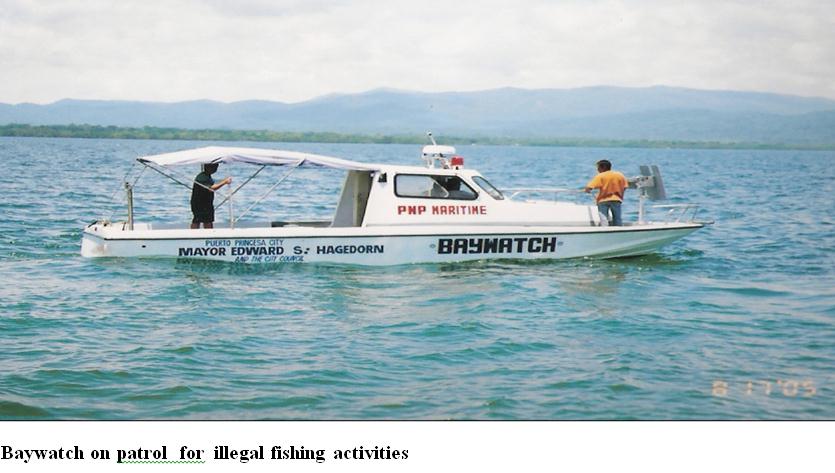 Bantay Dagat or Baywatch. The primary role of the Bantay Dagat or Baywatch is the protection and conservation of the City’s marine ecology by waging an all-out drive against illegal fishing and related activities in its four strategic bays namely: Puerto Princesa Bay, Honda Bay and Turtle Bay. Program Manager of Baywatch Mr. Benito C. Marcelo is succeeded by his son Ian Marcelo.
Bantay Dagat or Baywatch. The primary role of the Bantay Dagat or Baywatch is the protection and conservation of the City’s marine ecology by waging an all-out drive against illegal fishing and related activities in its four strategic bays namely: Puerto Princesa Bay, Honda Bay and Turtle Bay. Program Manager of Baywatch Mr. Benito C. Marcelo is succeeded by his son Ian Marcelo.
An assessment conducted by the City Government, indicated the rampant use of poisonous substances and explosives and such illegal methods: muro-ami, trawl, hulbot-hulbot and fine mesh nets. In response, the City enacted Ordinance No. 199-92 otherwise known as the Cyanide Ordinance and Ordinance No.15-92, which bans the shipment of live fish and lobster outside Puerto Princesa and the strict implementation of the Fishery Laws.
In July 1992, Mayor Hagedorn issued Executive Order (EO) No. 01, series of 1992, creating a Special Task Force Unit (STFU), also known as the “FORCE” under his direct supervision. Baywatch has been tasked to “eradicate illegal fishing and the protection, conservation, utilization and exploitation of marine resources” of the City as provided for by Republic Act No. 7160, otherwise known as the Local Government Code of 1991.
Among the illegal methods of fishing, cyanide fishing is the most pernicious and the most difficult to control. Unlike dynamite or trawl fishing, cyanide fishing is a very silent operation and is usually done underwater. Due to the great demand for live fish and its relatively high price in the market, cyanide fishing has become rampant in the City. To address this, Mayor Hagedorn moved for the passing of a legislation banning the shipment of live fish, the catching of which is blamed for the destruction of the City’s coral reefs. On the other hand, to protect the interest of the legitimate live fish catchers, the Cyanide Detection Test Laboratory has been established to scientifically determine if fish were caught by illegal means. It is the first facility in the country to be set up by a Local Government Unit (LGU).
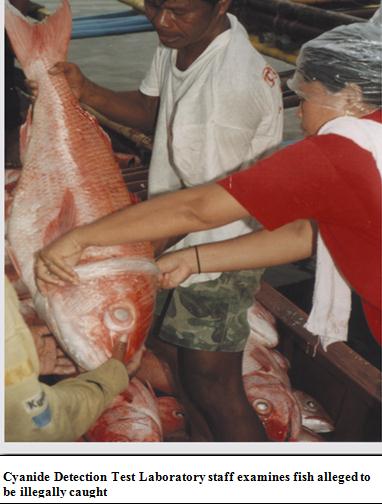 The main function of the program is to conduct daily sea patrol and protect the 327,586 hectares of Puerto Princesa City waters from illegal fishing activities. Its objective is to monitor, apprehend and curtail all forms of nefarious maritime activities and conduct continuous information dissemination and dialogue on environment and ecological protection and awareness to fishermen and stakeholders and in coordination with law enforcement agencies.
The main function of the program is to conduct daily sea patrol and protect the 327,586 hectares of Puerto Princesa City waters from illegal fishing activities. Its objective is to monitor, apprehend and curtail all forms of nefarious maritime activities and conduct continuous information dissemination and dialogue on environment and ecological protection and awareness to fishermen and stakeholders and in coordination with law enforcement agencies.
The program has been designed and pursued with unrelenting drive against illegal fishing activities. To implement the program, sea patrols of the six bays of Puerto Princesa were regularly conducted in the enforcement of City Ordinance 57-97 (Fishery Laws), City Ordinance 110-99 (Transporting Live Lobster), Republic Act No. 9147 (Transporting Wildlife), and Presidential Decree No. 705. Apprehensions of violators of the said Ordinances were referred to the City Legal Office for appropriate action. To augment efforts in detecting fish caught by cyanide, the BFAR has established a Cyanide Detection Laboratory in Puerto Princesa City.
In coordination with other agencies of government and NGOs, demolished illegal fishpond dikes in Barangay Tagabinet. It also supported the Mangrove Rehabilitation and Enrichment funded by the Japan Bank for International Cooperation in Barangays Kamuning, Tagburos, Sta. Lourdes and Bacungan on Ocotober 17, 2003, collaborated with the Department of Agriculture-Bureau of Fisheries and Aquatic Resources (DA-BFAR) with the active participation of the stakeholders in the protection and rehabilitation of Puerto Princesa Bay and Honda Bay.
It maintains the 74-hectare Fish Sanctuary in Barangay Manalo and the 40-hectare fish sanctuary in Barangay Binduyan. Fishermen living in the areas reported that their harvest has increased from two kilos to six kilos despite of the fact that their fishing hours were shortened from three hours to only one hour.
The Mangrove Enrichment and Reforestation Projects in Barangays Bacungan, Sta. Lourdes, Babuyan, Tagburos, Luzviminda and Kamuning was expanded and maintained. The mangrove nursery in Barangay San Jose produced about 10,000 propagules. Alongside with the mangrove reforestation project is the two-hectare nipa plantation in Barangay Bacungan which was expanded to include Barangay Luzviminda.
On top of all these, Mayor Edward S. Hagedorn personally initiated the launching of “Love Affair with Nature” on February 14, 2003.
Environmental Estate. Presidential Proclamation No. 718 provided that the City’s 1,072 hectares of land, formerly Sta. Lucia Sub-Colony of the Iwahig Prison and Penal Farm, located in the southern promontory of Puerto Princesa Bay be allocated for its Environmental Estate. The Estate is perceived to serve both as a catalyst for economic growth and a vehicle for conserving the environment. The area has been designed to accommodate facilities for scientific research on ecology and wildlife, tourism and recreation and experimental technologies.
It has been conceived to contribute to the ecological and sustainable development of Puerto Princesa City into a world class, park-like city, which will be preserved and promoted as a pristine sanctuary for nature and the gateway for eco-tourism in Asia. It is also seen as a catalyst for economic growth and a vehicle for preserving the environment.
The center has four major components: Academic Center (Beach forest reforestation and Mangrove reforestation); Wildlife Component (Diverse species nursery); Eco-tourism Village (Dipterocarp forest reforestation and Fresh Fish Life Study Station); and Recreation Component. The first three components will house the nurseries for the four types of forest endemic to the Philippines.
This is a natural consequence of the Bantay Puerto Program, institutionalizing the concerted effort for a peaceful and sustainable economic development in the years to come. It represents various habitats conducive to make it an evolutionary center.
Strategic Environmental Plan (SEP) For Palawan. The Palawan Province including the City of Puerto Princesa is covered by Republic Act 7611 otherwise known as the Strategic Environmental Plan (SEP) for Palawan. It serves as the framework for all development undertaking in the province.
In addition to national laws protecting the environment and natural resources, Republic Act 6711 otherwise known as the Strategic Environmental Plan (SEP) for Palawan, provides additional authority to officials in Palawan and Puerto Princesa City in particular, over local environmental concerns and issues.
The Environmentally Critical Areas Network (ECAN) is the spatial basis for its implementation. The areas covered are classified into the following three main components: Terrestrial Component, Coastal/Marine Zones and Tribal Ancestral Lands.
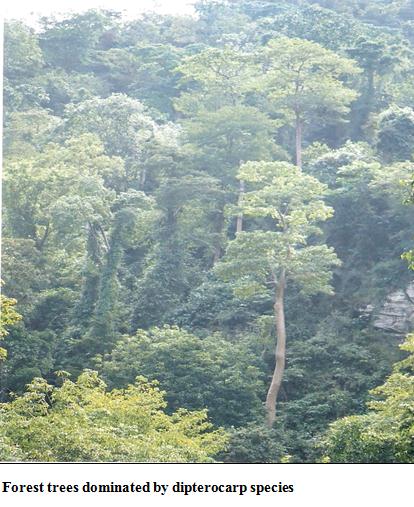 In 1998, the total forest cover of the city was 151,405 hectares or around 60 percent of the total land area. Forest trees are dominated by dipterocarp species. These are common hardwood trees known as the apitong group.
In 1998, the total forest cover of the city was 151,405 hectares or around 60 percent of the total land area. Forest trees are dominated by dipterocarp species. These are common hardwood trees known as the apitong group.
Forest zones where resource utilization is allowed are within the Buffer Zone and Multiple/Manipulative Zone of the Terrestrial Component.
The Buffer Zone has an elevation ranging from 100-1,000 meters and permits regulated use. It is further divided into:
 1. Restricted Use Area. This refers to inner barrier, generally surrounding the core zone where limited and non-consumptive activities which do not impair the ecological balance may be allowed. These activities include almaciga tapping, honey gathering, hiking and research. This includes an altitude limit from 500-1,000 meters elevation; poor and stunted and sparse strands of semi-deciduous forest which can be lowered to a base of 300 meters to protect the remaining forested peaks of watersheds adjacent to critical ecosystems such as coral reefs, Puerto Princesa Subterranean River National Park, and watersheds for major irrigation and water supply and mini-hydro projects; and identified mangrove areas where limited use would not cause negative impacts.
1. Restricted Use Area. This refers to inner barrier, generally surrounding the core zone where limited and non-consumptive activities which do not impair the ecological balance may be allowed. These activities include almaciga tapping, honey gathering, hiking and research. This includes an altitude limit from 500-1,000 meters elevation; poor and stunted and sparse strands of semi-deciduous forest which can be lowered to a base of 300 meters to protect the remaining forested peaks of watersheds adjacent to critical ecosystems such as coral reefs, Puerto Princesa Subterranean River National Park, and watersheds for major irrigation and water supply and mini-hydro projects; and identified mangrove areas where limited use would not cause negative impacts.
2. Controlled Use Area. This refers to outer protective barrier that encircles the core and restricted use areas. Strictly controlled mining, and logging which is not for profit, almaciga tapping, tourism development, research, grazing and gathering of honey, rattan and other minor forest products may be allowed. This includes an altitude limit of 100-300 meters elevation; lower altitude limit can go up to 300 meters if it would not cause negative ecological impacts but the high altitude limit shall not exceed 500 meters; and in areas where there is a community within or immediately adjacent to a restricted use area, a controlled use zone could be delineated from the restricted area for use of the community.
3. Traditional Use Area. This refers to edges of intact forests where traditional land use is already stabilized. Management and control is being carried out with the other supporting programs of the SEP such as the Palawan Tropical Forestry Protection Program (PTFPP).
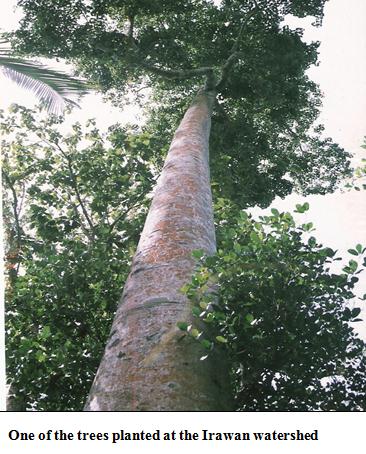 On the other hand, the Multiple/Manipulative Use Zones are areas where the landscape has been modified for different forms of land use. Intensive resource use may be allowed including agriculture, infrastructure, industrial settlement and tourism development.
On the other hand, the Multiple/Manipulative Use Zones are areas where the landscape has been modified for different forms of land use. Intensive resource use may be allowed including agriculture, infrastructure, industrial settlement and tourism development.
With the implementation of SEP, a total commercial log ban in the entire province is being imposed. Commercial gathering of forest products is limited only to minor forest products. Rattan gatherers are required to plant rattan on their concession area for sustainability measures.
 The city has identified three sites for communal forest in Barangay Napsan with a total land area of 1,449 hectares. Stakeholders in the project are the community residents. Gathering of timber in this area is limited to 28 hectares on its first year of operation with an estimated volume of 1,605 cubic meters. Replanting of indigenous species is a must to sustain the project.
The city has identified three sites for communal forest in Barangay Napsan with a total land area of 1,449 hectares. Stakeholders in the project are the community residents. Gathering of timber in this area is limited to 28 hectares on its first year of operation with an estimated volume of 1,605 cubic meters. Replanting of indigenous species is a must to sustain the project.
Reforestation projects of the city government are located in Barangays Irawan, Manalo and Bahile covering an area of 164 hectares. These projects are 100 percent completed with 80-85 percent survival rate. Most species planted are acacia mangium, acacia auricolifarmis, mahogany, agoho, narra and gemelina.
There are some 4,643 hectares in the city classified within alienable and disposable lands with slope of 18 percent and above. These areas are fragile and are prone to soil erosion. Development in these areas should be strictly controlled. Precautionary measures in agricultural land utilization such as the application of Sloping Agricultural Land Technology be employed in these areas to prevent degradation.
The city’s Ancestral Domain Claims covers a total area of 93,838.67 hectares of which 90 percent fall within the forestland. Gathering of forest products is the main source of livelihood of the indigenous groups, hence their active participation and involvement in the proper utilization and conservation of the natural resources. Collective effort is needed in educating and empowering them to prevent their being exploited by big time concessionaires. Thereby making them key partners in promoting sustainable use of forest resources
AGRICULTURE
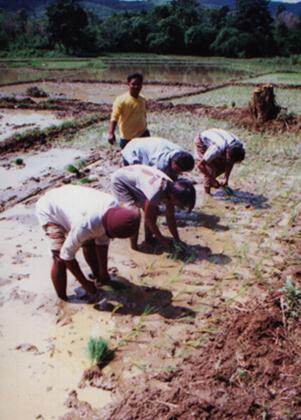 Puerto Princesa is basically agriculture-based economy, though still in subsistence level. Its agriculture productivity is in more ways than one been handicapped by reservations like the Iwahig Prison and Penal Farm which occupies the lowland areas most fit for agriculture. The other is that most of the arable lands ar privately owned way back the Spanish regime as encomienda or concession.
Puerto Princesa is basically agriculture-based economy, though still in subsistence level. Its agriculture productivity is in more ways than one been handicapped by reservations like the Iwahig Prison and Penal Farm which occupies the lowland areas most fit for agriculture. The other is that most of the arable lands ar privately owned way back the Spanish regime as encomienda or concession.
Agriculture comprises farming, fishing, livestock and poultry raising is an integral part of the City’s economy. Farming is the main livelihood of 30 percent of the City’s households. The estimated agricultural land is 39,200 hectares or 15.4 percent of the City’s total land area. Main products are rice, coconut, fruits, cashew, corn root crops, coffee and vegetables.
![]() Metro Manila’s ten million population get their fish and other marine supplies from the City in particular and Palawan in general.
Metro Manila’s ten million population get their fish and other marine supplies from the City in particular and Palawan in general.
To improve the farmer’s quality of life, the City Government has undertaken productivity enhancement programs.
AGRICULTURAL DEVELOPMENT PROGRAM
This has three sub-sectors to insure effective implementation and continuity. These are :
Mango Development. It is designed to provide grafted mango seedlings to farmer- cooperators. To date, satellite nurseries in Barangays Luzviminda, Mangingisda, Napsan, Bagong-Bayan, Maruyogon, San Razfael and Langogan had been set up to bring the nursery services closer to the intended beneficiaries.
Strengthening of Agro-based Cooperatives. The program conducted management trainings for cooperatives and helped organize and register them. It also held trainings/seminars on new technologies like food processing, hillside farming, backyard and bio-intensive gardening.
Material Inputs. To provide the mechanism to make readily available all necessary agricultural inputs such as fertilizer, pesticides and the like.
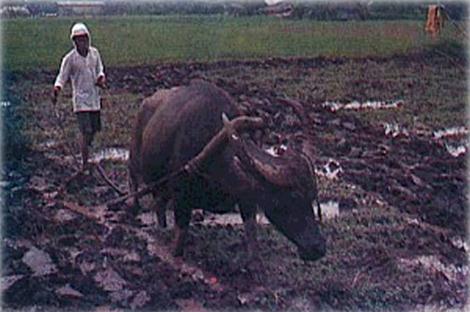 Carabao and Tractor Pool Project. The Carabao Pool was designed to provide farmers with draft animals to cultivate their lands particularly upland areas while the Tractor Pool program was envisioned to encourage the farmers to help one another in plowing and harrowing their field by grouping themselves into five or more. In this manner they learn to plan, pool resources and work together, sharing the limited resources resulting in an optimum harvest.
Carabao and Tractor Pool Project. The Carabao Pool was designed to provide farmers with draft animals to cultivate their lands particularly upland areas while the Tractor Pool program was envisioned to encourage the farmers to help one another in plowing and harrowing their field by grouping themselves into five or more. In this manner they learn to plan, pool resources and work together, sharing the limited resources resulting in an optimum harvest.
The heterogeneity of the topography of Puerto Princesa is reflected in the diversity of its agriculture. On the flat coastal plains in the south, farmers specialize in lowland rice production, often producing two cropping a year. In the hilly upland areas are coconuts, banana, cashew, citrus and a wide variety of other fruits. In terms of “big money earner” copra tops them all.
 Cash for Work. This is a stopgap measure intended to sustain the families of farmers who are undergoing the transition from kaingin or slash and burn farming to legitimate farming.
Cash for Work. This is a stopgap measure intended to sustain the families of farmers who are undergoing the transition from kaingin or slash and burn farming to legitimate farming.
Plant Nursery Development. The primary concern of the project was to provide high yielding and early maturing fruit trees to marginal farmers. The City Agriculturist Office had established six nurseries where grafted mango and other fruit bearing trees and ornamental tree seedling were propagated including orchids.
OTHER AGRICULTURAL ASSISTANCE PROGRAMS
Financial and material, livelihood and self-employment assistance are likewise given to farmers in line with the City Government’s Poverty Eradication Program.
Extension Services. It has been envisioned to improve the yield of agricultural crops by introducing new farm management techniques, planning and management and agricultural advisory services. Farmers were taught scientific and sustainable farming system particularly on crops production including salt.
Home Management Technology. The program provided farmers and fisherfolks with the knowledge and skills and competence for resource management. It also provided technical entrepreneurial and leadership skills development training for livelihood projects to increase household income. The housewives in particular were trained in meat processing, fish processing, fruit and vegetable processing, orchid culture, baking and pastries making. Notable in these trainings was the utilization of agro-waste product into mushroom culture, nata de coco and coco water vinegar. In support to the nutrition program, they were also taught containerized and bio-intensive gardening.
LIVESTOCK AND POULTRY
Puerto Princesa has large open areas used as grazing lands and other agriculture ventures. The raising of cattle, one of the activities reported during the Spanish times has yet to be given much concern. The area which the City Hall and other government buildings and facilities are located was formerly a ranch. It was released from the jurisdiction of the Department of Environment and Natural Resources (DENR) upon the request of the Dominican Sisters in Puerto Princesa when it applied for the twenty-hectare area for its use, the same area that the Palawan State University occupies.
The other agricultural ventures are poultry, hog and goat raising. Meat production is vital to the economy and had been undertaken as backyard or cottage industry.
More lands were cultivated, although a large measure remained untapped and idle because of a lack of cultivators and tillers.
HEALTH SERVICES
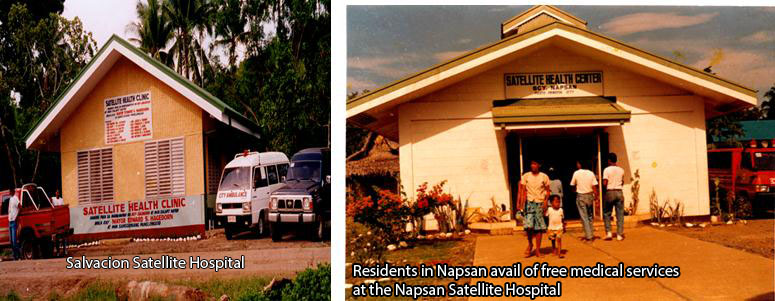 The extension of health services more especially in far flung barangays through the City Health Office attends to numerous health-related cases under these programs: Expanded Immunization; Family Planning and Control; Nutrition; Diarrheal Disease Control; Environmental Sanitation; Malaria Control; and Laboratory Services.
The extension of health services more especially in far flung barangays through the City Health Office attends to numerous health-related cases under these programs: Expanded Immunization; Family Planning and Control; Nutrition; Diarrheal Disease Control; Environmental Sanitation; Malaria Control; and Laboratory Services.
The City Government also continually operates the seven Satellite Hospitals in the Barangays of Napsan, San Rafael, Cabayugan, Salvacion, Mnagingisda, Inagawan and in Sitio Nasuduan, Barangay Tagabinet. Each of the four-bed hospitals has its own medical team, ambulance, radio communications, medicines available 24 hours a day, all free of charge.
TRADE AND COMMERCE
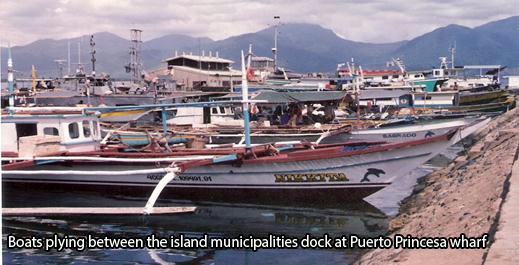 Puerto Princesa, the gateway to Palawan, serves as the center of trade and commerce for the twenty-three (23) municipalities of the province. Its existing and primary commercial area covers an area of 129 hectares. This is where the business establishments are concentrated. Next to government commercial establishments providethe greatest number of employment opportunities to the City’s labor force.
Puerto Princesa, the gateway to Palawan, serves as the center of trade and commerce for the twenty-three (23) municipalities of the province. Its existing and primary commercial area covers an area of 129 hectares. This is where the business establishments are concentrated. Next to government commercial establishments providethe greatest number of employment opportunities to the City’s labor force.
Experience has shown that the economy depend largely on the volume of trade and commerce. The mobility of people and goods depend on the efficiency of public utilities and financing firms, particularly of banks.
There are now 20 banking institutions, 51 lending/financial institutions, 11 insurance companies, and 34 pawnshops in the City; four major telecommunications (RCPI, SMART, GLOBE, PLDT); five radio stations (DWRM, DZRH, DYEH, DYSP, DYPR); one cable TV.
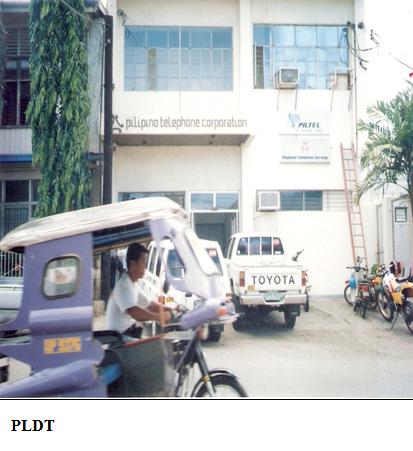
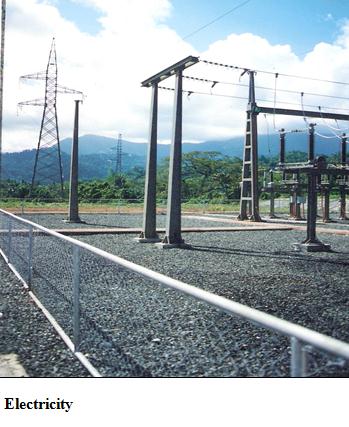
INFRASTUCTURE PROGRAM
Under the leadership of Mayor Edward S. Hagedorn, Puerto Princesa witnessed a boom in both horizontal and vertical constructions, implemented with the ultimate goal of boosting the economic development of the City, at the least possible cost. In support to the road construction and rehabilitation projects the following were established:
Equipment Pool. Primarily, the City Government purchased trucks and heavy equipment to complement its equipment pool in order to avoid full dependence on private contractors in the implementation of its projects including waste and garbage d isposal.
Asphalt Batching Plant. It purchased a batching asphalt plant to provide the necessary materials especially for its horizontal projects. The acquisition of the plant has greatly expedited road construction and done by administration.
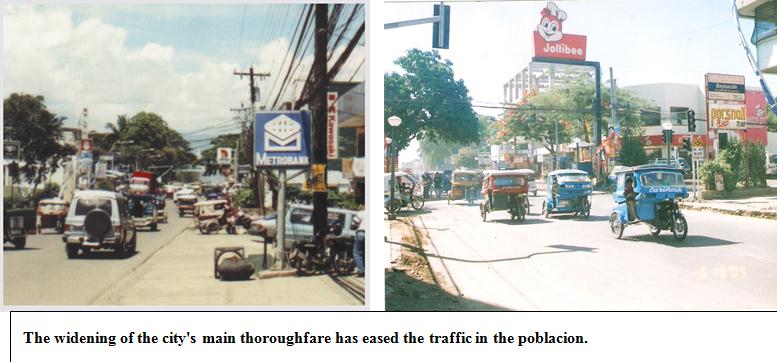 To ensure the continuous flow of traffic in the rural barangays, the City Government the following bridges constructed: Marufinas Mini-Timber Bridge; Manturon Bailey Bridge; Cabayugan Bailey Bridge, Luzviminda Detour Bridge and 20 foot bridges constructed in the different barangays.
To ensure the continuous flow of traffic in the rural barangays, the City Government the following bridges constructed: Marufinas Mini-Timber Bridge; Manturon Bailey Bridge; Cabayugan Bailey Bridge, Luzviminda Detour Bridge and 20 foot bridges constructed in the different barangays.
COMPREHENSIVE HOUSING PROGRAM
To deliver his campaign promise to make “no Puerto Princesan homeless or squatter in their own city,” Mayor Edward S. Hagedorn lose no time to create on October22, 1992 the City Housing Office.
Among the measures instituted by the Office were to locate, identify and register these 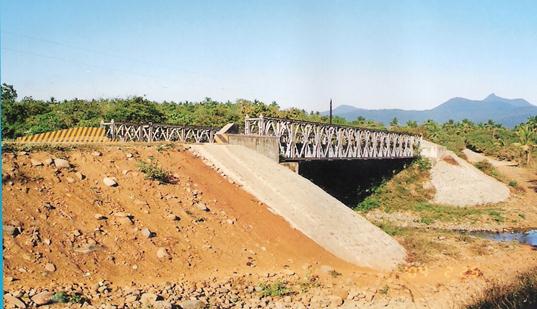 people to find out the magnitude of the problem of homelessness; find suitable relocation sites; source funding for land acquisition; site development and housing construction.
people to find out the magnitude of the problem of homelessness; find suitable relocation sites; source funding for land acquisition; site development and housing construction.
Of the 9,500 squatter families surveyed in the City, 7,980 or 84 percent lived along the coastal areas of Puerto Princesa Bay, Honda Bay and Ulugan Bay. Considering the amount of daily refuse these families throw into the bays, they are the greatest polluters of the City’s three most important bays.
To complement the functions of the City Housing Office, are the Council Against Squatting Syndicates (CASSAPS) and its implementing arm, the Anti-Squatting Task Force having mapped-out all the squatters in the City, strictly enforced the “no building permit – no construction law.”
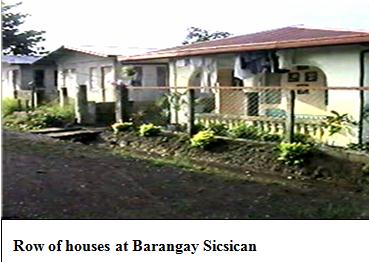 Sicsican Housing Project Phase III. Barangay Sicsican is home to 430 families who live in single-detached houses on a 5.4 hectare low cost housing project.
Sicsican Housing Project Phase III. Barangay Sicsican is home to 430 families who live in single-detached houses on a 5.4 hectare low cost housing project.
The Barangay Sicsican Housing Project was chosen by the Asian Institute of Management (AIM) as one of the country’s best housing programs, thereby earning for Puerto Princesa City the coveted “Galing-Pook Award.” The project is being fully funded by the City Government offering a house and lot package to the beneficiaries at cost payable in 25 years at zero interest. Each of the beneficiaries, mostly affected by the City’s port expansion program was offered Php 10,000.00 relocation assistance. This was given only after they have demolished their own house. An added assistance was the free use of the City’s trucks to transport their belongings.
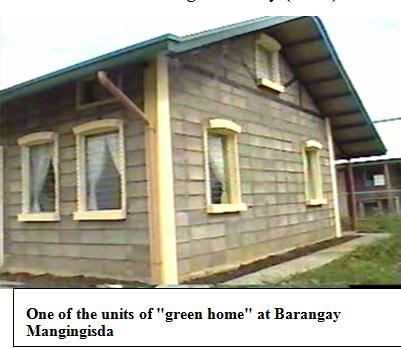 Barangay Mangingisda Project. The Barangay Mangingisda Housing Project Phase I, the site development of 21.6 hectares funded by a grant from the National Housing Authority (NHA). Phase II, the site development of 43.1 hectares and the construction of duplex housing units funded in part of the proceeds of the Municipal Bond Flotation (Green Bonds).
Barangay Mangingisda Project. The Barangay Mangingisda Housing Project Phase I, the site development of 21.6 hectares funded by a grant from the National Housing Authority (NHA). Phase II, the site development of 43.1 hectares and the construction of duplex housing units funded in part of the proceeds of the Municipal Bond Flotation (Green Bonds).
In this housing project, the City Government introduced the “green home” concept. Basically, the house is designed and constructed with the end in view of reducing energy demand from a mix of energy uses. By using an average of five compact flourescentr lamps instead of incandescent bulbs the households will cut energy bills by 64 percent. Moreover, energy demand will also be reduced by 30 to 40 percent due to the abundance of the natural illumination, enhanced ventilation, the cooling effect of the roofing material and the growing of at least one fruit tree per household.
Barangay Mangingisda designated as the resettlement site of squatters to be displaced in the foreshore areas of urban barangays has also allocated a 17-hectare commercial area. This barangay including Barangay San Jose and surroundings is projected as sites for development staging/options because they have enough space to accommodate added population without creating excessive pressure on nature and the environment.
Other housing projects are: VISAPA; Golden Valley Subdivision; Palawan National Teachers Village; San Jose Lomanang Project; San Jose Abordo Project; San Jose Russell Project (Employees Village); Saint Mary Subdivision; Green Valley ;PPA Relocation in San Manuel; Tipoco Village; Ellenview Subdision; Jacana; Tagburos (Alvarez & Magay); Barangay Princesa; Sta Cruz; Melwang; Bahile Habitat; Bahile Tribal Village; Bahile Pier; and BLISS.
The number of housing projects undertaken by the Hagedorn Administration has been realized beyond expectation. Never has there been so many City Government Funded Housing Projects as in his time.
 INDUSTRY
INDUSTRY
There are only a few industrial establishments in the city. Consequently, employment opportunities are also limited. However, there are informal cottage industries operating in the urban and rural areas. Common activities include processing of fish, meat and other agricultural products, mat and basket weaving and production of novelty items. The existing industrial site in the urban area covers an area of nine hectares. Predominantly the activities include elementary processing, repair, manufacturing, storage or production of goods including motor vehicles, timber or rattan furniture and housing materials
The city does not encourage extractive industries or pollutive and/or hazardous industries causing adverse impact upon the environment. Potential and preferred industries include dairy, industrial rice production, essential oil production, paper making and the processing of agricultural goods such as cashew, coconut, mango, fish and meat products. These are just some of the activities allowed in the 95-hectare industrial site. These agri-based industries are viewed as the major alternative to generate employment and to increase the economic benefits from agriculture. Likewise, processing of minor forest products such as rattan, almaciga resins, honey, bamboo and buho are utilized by small-medium industries in the production of furniture, souvenir and novelty items. Investment trend in construction industry has also been promising enough to attract more investors.
The Environmental Estate is available to companies and institutions interested in investing in environmental-friendly industries, environmental research and training, and agricultural research.
 EDUCATION PROGRAM
EDUCATION PROGRAM
To highlight the importance that the City Government attaches to education as playing a pivotal role in the City’s future development, Mayor Edward S, Hagedorn established the First Public Montissori in the country and launched the City Education Enhancement Program. The project was conceived to improve the standard of education within the service area of the City Government by identifying and prioritizing the establishment of schools organizing continuous training programs for school teachers in the City.
The program laid the groundwork for the separation of the School for Philippine Craftsman from the Palawan 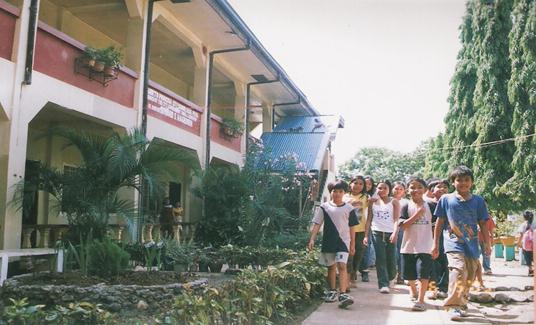 Integrated National School (PINS) formerly the Palawan National School and its conversion into a School of Arts and Trades.
Integrated National School (PINS) formerly the Palawan National School and its conversion into a School of Arts and Trades.
It also proposed the establishment of the City Manpower Training and Development Center (CMTDC) and assisted in the preparation of documents for the recognition of PINS-Annex High Schools of Barangays Luzviminda, San Rafael and Sta. Lourdes.
School Buildings. The City Government has constructed two-story school buildings in various elementary schools; high schools; and technical schools in the City..
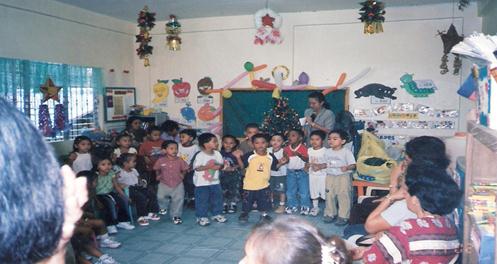 Day Care Centers. To meet the ever growing educational needs of the pre-school children, it opened day care centers which also serve as drop in centers for mothers who are busy working.
Day Care Centers. To meet the ever growing educational needs of the pre-school children, it opened day care centers which also serve as drop in centers for mothers who are busy working.
Satellite Library. This has become a very important tool in the City Government’s environmental protection campaign. In answer to the long felt need for library service in far flung areas of the City, seven Satellite Libraries were initially established. One for each barangay with a high school and an additional two were set up in strategic locations. Each Satellite Library is equipped with research materials such as encyclopedias, dictionaries, newspapers and a variety of livelihood and how-to’s reading materials.
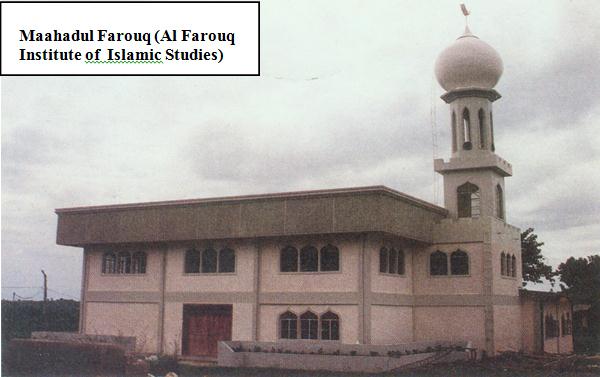 The Satellite Libraries did not only serve the students but also the farmers, fisher folks, housewives and out-of-school youth. The Libraries were established in line with the Education Enhancement Plan of the City. It is one of the Top 20 finalists in the 1995 Galing Pook Award.
The Satellite Libraries did not only serve the students but also the farmers, fisher folks, housewives and out-of-school youth. The Libraries were established in line with the Education Enhancement Plan of the City. It is one of the Top 20 finalists in the 1995 Galing Pook Award.
MAJOR INCIDENTS IN 2001. There were major events in 2001 which influenced the political and socio-economic conditions in the City: first, the hostage taking by the Abu Sayyaf of 20 guests and employees of the Dos Palmas Resort in May precipitated a sharp decline in the City and in the whole province of Palawan alike; second, there was a local election earlier in May and a new administration took over the reign of the City Government in June 30. Mayor V. Dennis M. Socrates has since then vigorously espoused a paradigm shift in the concept of government and local governance. He re-defined his management relationship as Chief Executive to his constituents. He described this relationship as a radical departure from the one people had even known before. He has repeatedly enjoined the Department Heads to do what they think should be done and has impressed upon them his preference for shared leadership and participative decision making.
The third incident has had a more global impact. The Twin Towers tragedy in New York in September 11 further weakened the already debilitated tourism industry in the City. The Tourism activities have reduced to 20 to 30 percent of their level due to the Dos Palmas incident.
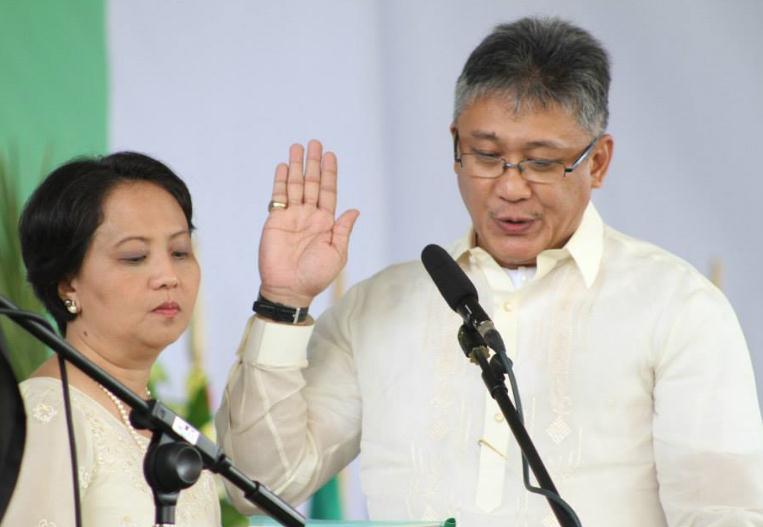 VICTORINO DENNIS MACALINAO SOCRATES
VICTORINO DENNIS MACALINAO SOCRATES
Victorino Dennis M. Socrates assumed office on June 30, 2001. His call for the transformation of the so-called culture of corruption into a culture of goodness and service or a “SERVIAM” (Service; Effectiveness; Responsiveness; Vigilance; Innovativeness; Accountability; Morality) culuture; the politics of patronage into government-by-principles; the politics of personal interest to one orientated towards the common good; the notion of politics as a game of illusions into a field of service for the promotion of truth and goodness.
Accordingly, he felt that it was time to “stand traditional politics on its head” and veer away from out notion of government as a “patron” and provider of all our needs. Instead, we have to look at government as an effective partner of the business sector and civil society, thereby forging a tripartite approach to development.
Hand in hand with this cultural-revolution are the four priorities of his administration- livelihood; employment and economic activities; delivery of basic service; social justice; and law and order. All these placed emphasis on the primacy of the human person who after all the subject, agent and goal of all development.
More importantly, Mayor Socrates looked at the 2001 Accomplishment Report as one which signaled the birth of the new City of Puerto Princesa – a City which not only values life ands family, but also a City where a new culture is being institutionalized – a culture of good, effective and responsive governance; where systems and processes are respected; where transparency and accountability are strictly observed; where the leaders lead simple lives guided by strict moral principles, while actively pursuing the common good and the welfare of the people.
On July 30, 2001, City Mayor V. Dennis M. Socrates delivered his first State of the City Address. Spoken partly in Filipino and partly in English, his address covered among other things the following: the long term development objective of a “just peaceful and economically prosperous social order serving the freedom and dignity of the human individual;” his philosophy on development, governance and private sector participation; his development thrusts which included livelihood, improvement of the delivery of basic services, social justice, and law and order; and his priority development programs and projects.
During Mayor Socrates term he initiated the following: A unique concept of promoting Puerto Princesa dubbed as “Puertourismo”.
Tourist Police composed of well trained, young and hardworking men conspicuously deployed in their proper uniform at the airport and seaport and major tourism destinations in the City to assist tourists and to look after their welfare and safety.
The holding of a festival or “Burunyugan”, during the Feast of the Immaculate Conception. The activities were designed to attract people to join the week-long celebration to spur economic development in the City.
Participated in the 12th Philippine Travel Mart jointly with the Palawan Provincial Tourism Offie and garnered the Best Destination and Best in Marketing and Promotions awards.
As a result of the National Eco-Tourism Planning Workshop, the Puerto Princesa Subterranean River National Park (PPSRNP) was chosen as the Premier Tourist Destination in Regions IV, V and National Capital Region (NCR).
THE RECALL ELECTION
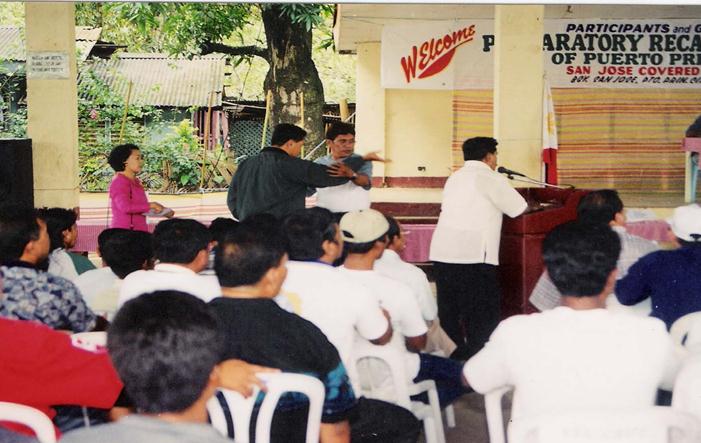 Providence must have intervened in Puerto Princesa City, when on July 2, 2002, one year and one month after Victorino Dennis M. Socrates assumed office as City Mayor, the President of the Association of Barangay Captains, Mark David Hagedorn, designated Interim Chairman of the Preparatory Recall Assembly (PRA) convened an assembly of barangay captains at the San Jose Gymnasium and approved Resolution No.01-02, to hold a Recall Election for City Mayor.
Providence must have intervened in Puerto Princesa City, when on July 2, 2002, one year and one month after Victorino Dennis M. Socrates assumed office as City Mayor, the President of the Association of Barangay Captains, Mark David Hagedorn, designated Interim Chairman of the Preparatory Recall Assembly (PRA) convened an assembly of barangay captains at the San Jose Gymnasium and approved Resolution No.01-02, to hold a Recall Election for City Mayor.
Section 69 of Republic Act No. 7160, provides that: “The power to recall for loss of confidence shall be exercised by the registered voters of a local government unit to which the local elective official subject to such recall belongs.” Section 70 of the same Act provides: “Recall may be initiated by preparatory assembly or by the registered voters of the local government unit to which the local elective official subject to such recall belongs.” Accordingly, “in the city 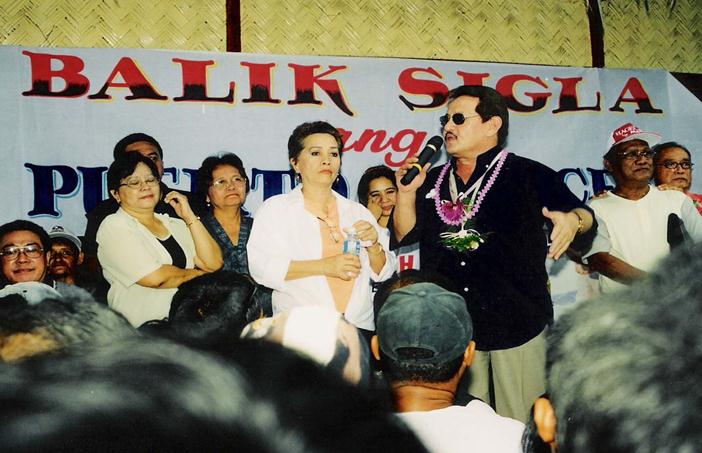 level, the preparatory recall assembly is composed of all punong barangays and sangguniang barangay members in the city.”
level, the preparatory recall assembly is composed of all punong barangays and sangguniang barangay members in the city.”
Citing “lose of confidence” in Socrates’ leadership, 346 barangay officials of Puerto Princesa signed a Resolution for his recall during a Preparatory Recall Assembly on July 2, 2002.
On August 21, 2002, the Commission on Elections issued Resolution 5673 which scheduled the recall election on September 7, 2002. Edward S. Hagedorn filed his certificate of candidacy as Mayor on August 23, 2002.
On August 27, 2002, Ma. Flores Adovo and Merly E. Guilo petitioned the Commission on Election to disqualify Edward S. Hagedorn on ground that he had been elected and served as mayor for three consecutive terms, namely 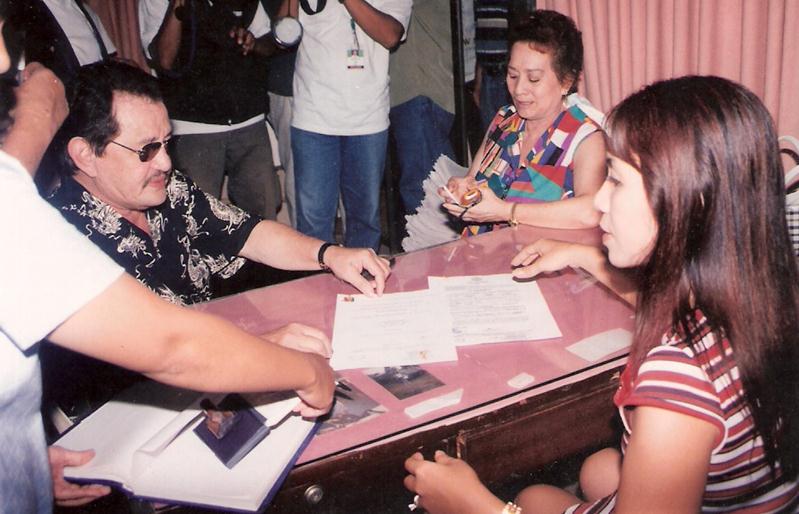 in 1992, 1995 qnd 1998, docketed as SPA 02-492.
in 1992, 1995 qnd 1998, docketed as SPA 02-492.
At the same time Dennis Socrates petitioned the Supreme Court to annul Resolution EM 02-010, which dismissed his petition to deny the PRA Resolution on his recall.
On August 30, 2002, Genaro V. Manaay and Bienvenido Ollave, Sr. filed separate petitions with the Commission on Elections to disqualify Hagedorn.
Vicente Sandoval, Jr., a candidate in the Recall Election, on September 3, 2002 petitioned the Supreme Court to annul Commission Election Resolution which fixed the election on September 7, 2002 and to give the candidates at least fifteen days more to campaign. In response to Sandoval’s petition, the Supreme Court issued a temporary 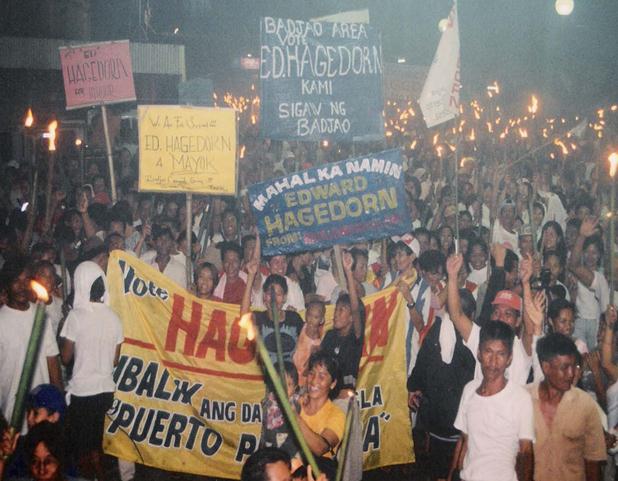 restraining order (TRO) to reset the election date. The Commission on Elections thereby set the Recall Election on September 24, 2002.
restraining order (TRO) to reset the election date. The Commission on Elections thereby set the Recall Election on September 24, 2002.
For a recall to prosper, all that is required is to get 25 percent of the total number of registered voters in a particular area to sign and declare a loss of confidence in the Local Executive, who in this particular case is Mayor V. Dennis M. Socrates. It must also bear the approval of the Association of Barangay Captains (ABC).
The Commission on Elections set the date for the Recall Elections on September 24, 2002 with three candidates vying for the position of City Mayor: Edward S. Hagedorn, Vicente Sandoval, Jr. and the incumbent Mayor V. Dennis M. Socrates.
The petitions of Adovo, Gilo, Manaay and Ollave were dismissed by the Commission on Elections on September 20, 2002, for lack of merit. It declared Edward S. Hagedorn qualified to run and be elected in the Recall Election. “It was 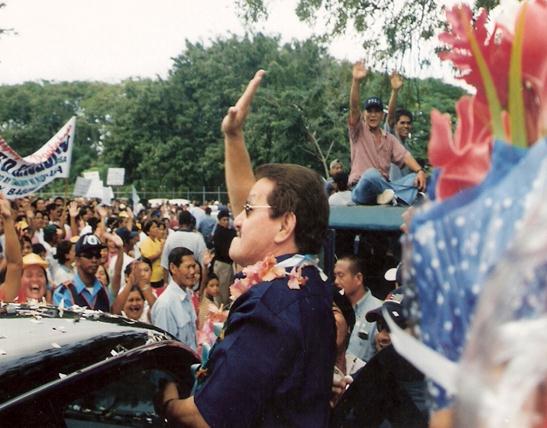 held that the invoked Section 8 of Article 8 of the Constitution prohibits immediate reelection after serving three consecutive three terms, did not apply to the case of Edward S. Hagedorn because he did not run for mayor immediately after his consecutive three terms. His third term ended in May 2001 when he ran for governor of Palawan – June 2001 to September 2002 – he was a private citizen. His was a unique situation in that his eventual election as mayo r was not seen as a fourth term, but only his first term in the second cycle of three years.
held that the invoked Section 8 of Article 8 of the Constitution prohibits immediate reelection after serving three consecutive three terms, did not apply to the case of Edward S. Hagedorn because he did not run for mayor immediately after his consecutive three terms. His third term ended in May 2001 when he ran for governor of Palawan – June 2001 to September 2002 – he was a private citizen. His was a unique situation in that his eventual election as mayo r was not seen as a fourth term, but only his first term in the second cycle of three years.
In the Recall Election, Edward s. Hagedorn got 20,238 votes, whereas V. Dennis Socrates 17,220 votes and Vicente Sandoval, Jr. 13,241 votes. The Supreme Court, however, restrained the City Board of Canvassers from proclaiming Edward S. Hagedorn. Thereupon he filed two very Urgent Motions to lift the High Court’s Order on September 27 and 30, 2002.
For more than a month, there was much tension in the City Hall while votes from sixty-six barangays were counted.
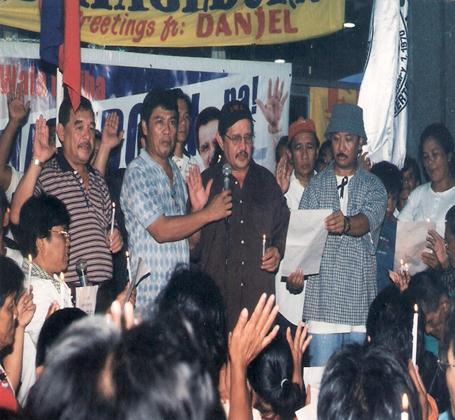 On November 12, 2002, voting 11-2, the Supreme Court lifted the Temporary Restraining Order (TRO), allowing the Commission on Elections (COMELEC) to proclaim Edward S. Hagedorn winner in the Recall Election in Puerto Princesa City.
On November 12, 2002, voting 11-2, the Supreme Court lifted the Temporary Restraining Order (TRO), allowing the Commission on Elections (COMELEC) to proclaim Edward S. Hagedorn winner in the Recall Election in Puerto Princesa City.
The Supreme Court Justices, with the exception of Chief Justice Hilario Davide, Jr. and Justice Adolf Azcuna, ruled that the prohibition of the fourth term for elective officials apply only to regular elections and not to any other polls, like the recall elections.
“Any subsequent election, like a recall election, is no longer covered by the prohibition. First, a subsequent election like recall is no longer an immediate re-election after three consecutive terms. Second, the intervening period constitute an involuntary interruption in the continuity of service.” The Tribunal stated in its 27-page decision.
In a nutshell, the Supreme Court held that Hagedorn is qualified citing four reasons: Hagedorn was not running for “immediate re-election”; his continuity of service was interrupted from June 2001 to September 2002; term limits should be construed strictly; and it is not actually a fourth term for Hagedorn.
COMELEC PROCLAIMS EDWARD SOLON HAGEDORN – WINNER
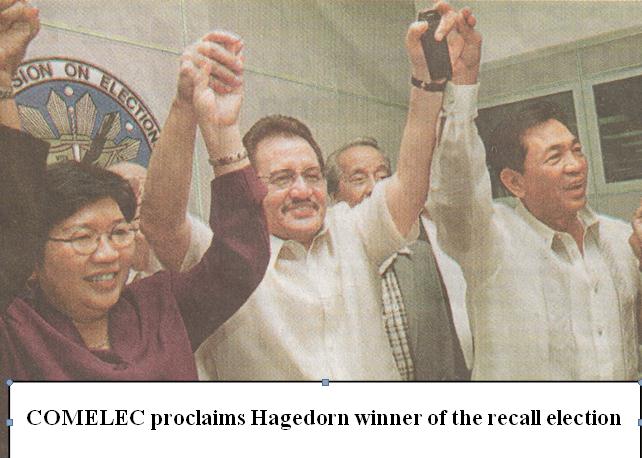 On November 13, 2002, Prosecutor Alberto Trinidad, Dr. Eduardo Lopez and Atty. Joselyn Postrado of the COMELEC Board of Canvassers proclaimed Edward S. Hagedorn, Mayor of Puerto Princesa City during rites at the COMELEC Headquarters in Intramuros, Manila. Also present at Hagedorn’s proclamation were COMELEC Chairman Benjamin Abalos, Sr. and Commissioner Luzviminda Tancangco, whose area of jurisdiction includes Southern Tagalog Region where Palawan is located. At his proclamation, Hagedorn thanked the High Tribunal for its decision allowing him to sit as Mayor of Puerto Princesa City.
On November 13, 2002, Prosecutor Alberto Trinidad, Dr. Eduardo Lopez and Atty. Joselyn Postrado of the COMELEC Board of Canvassers proclaimed Edward S. Hagedorn, Mayor of Puerto Princesa City during rites at the COMELEC Headquarters in Intramuros, Manila. Also present at Hagedorn’s proclamation were COMELEC Chairman Benjamin Abalos, Sr. and Commissioner Luzviminda Tancangco, whose area of jurisdiction includes Southern Tagalog Region where Palawan is located. At his proclamation, Hagedorn thanked the High Tribunal for its decision allowing him to sit as Mayor of Puerto Princesa City.
“Justice won,” Hagedorn told his constituents. He further said that he would immediately work for the healing process and reconciliation between himself and his rivals and work for the unity of his constituents. City Mayor Edward S. Hagedorn officially assumed office on November 18, 2002.
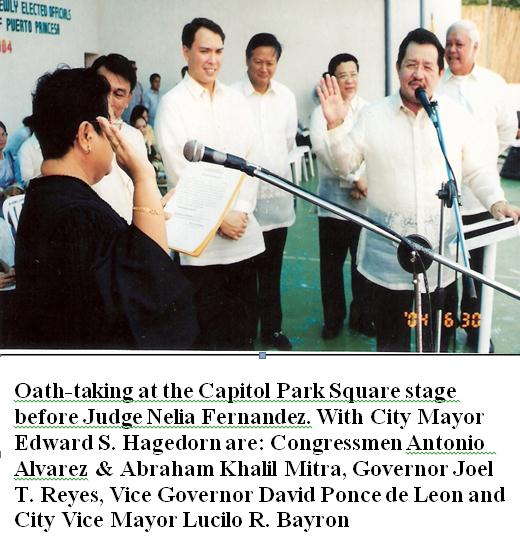
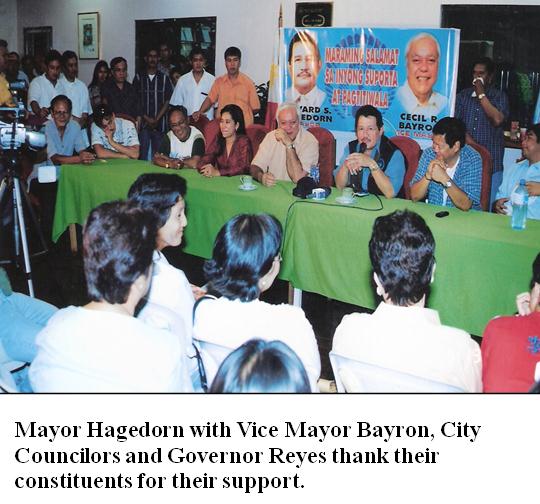
Featured Articles |
USAID/SURGE Project |

